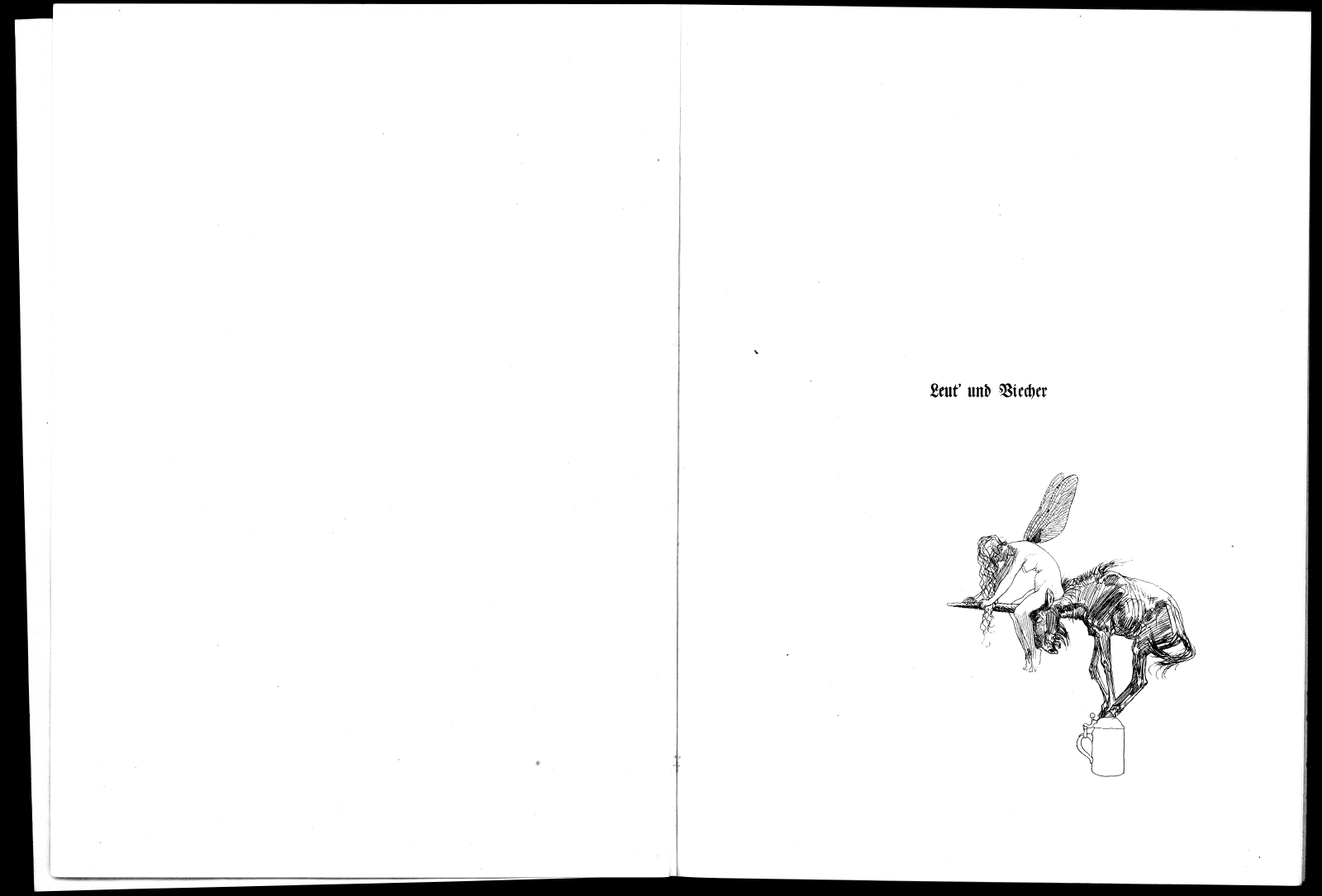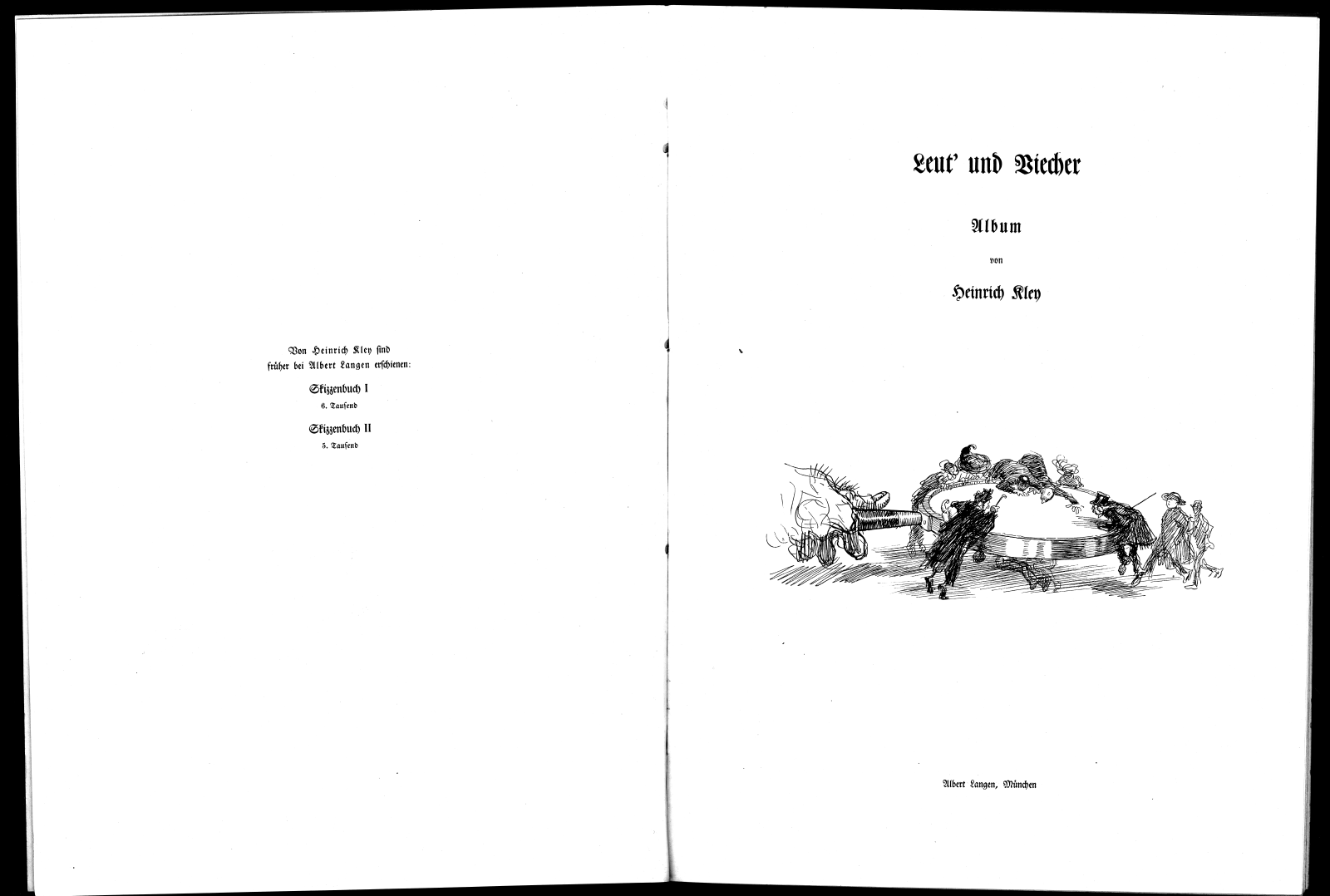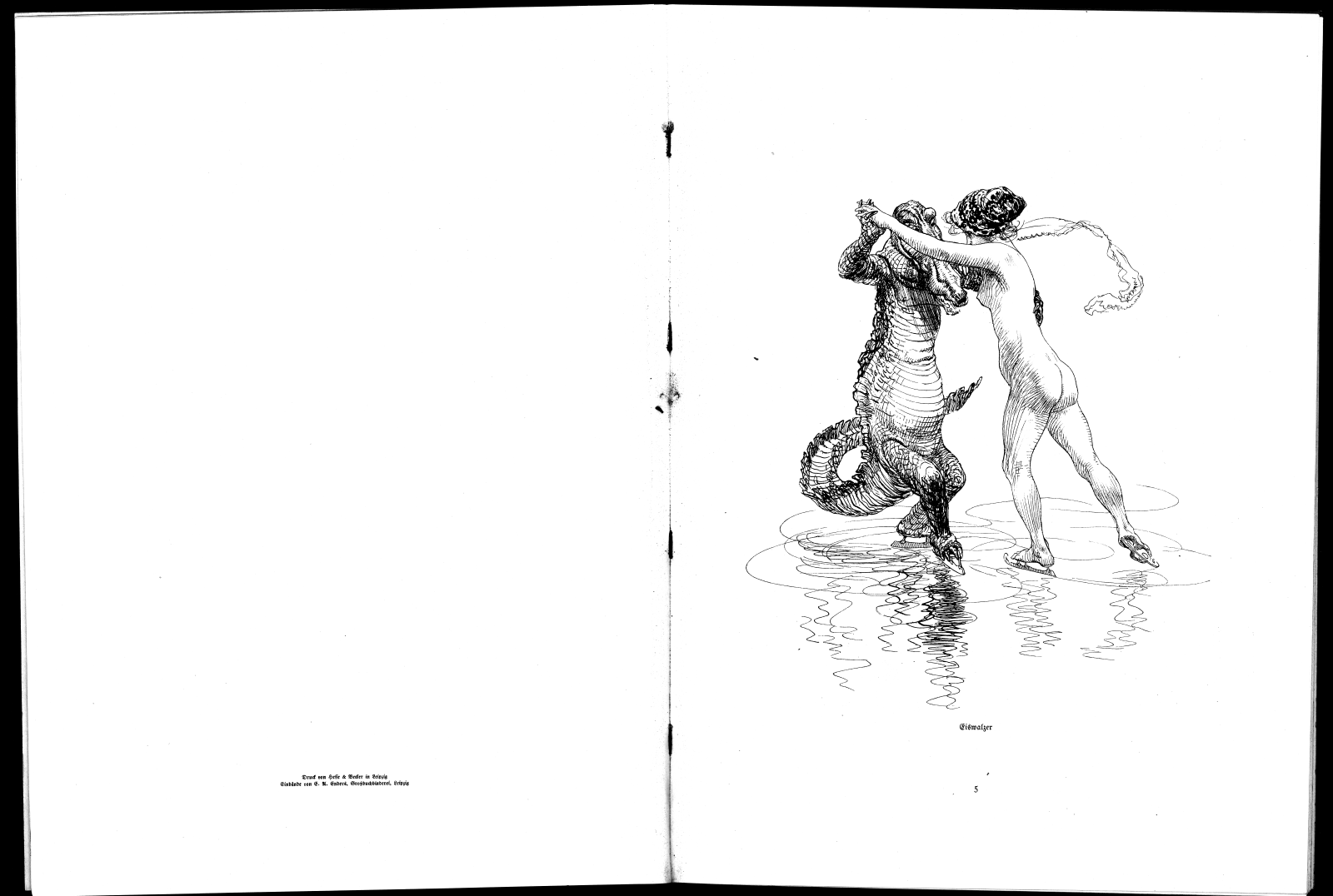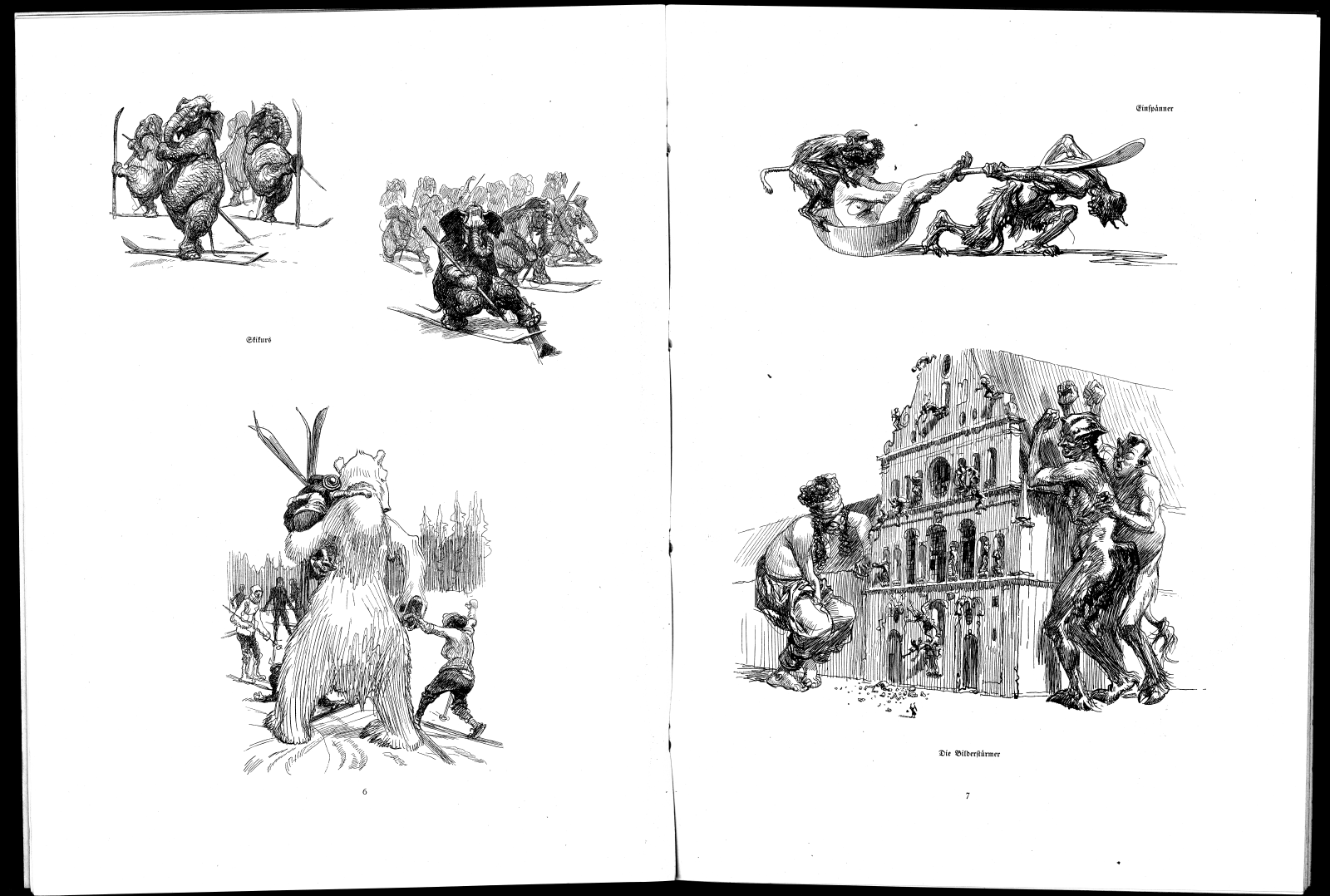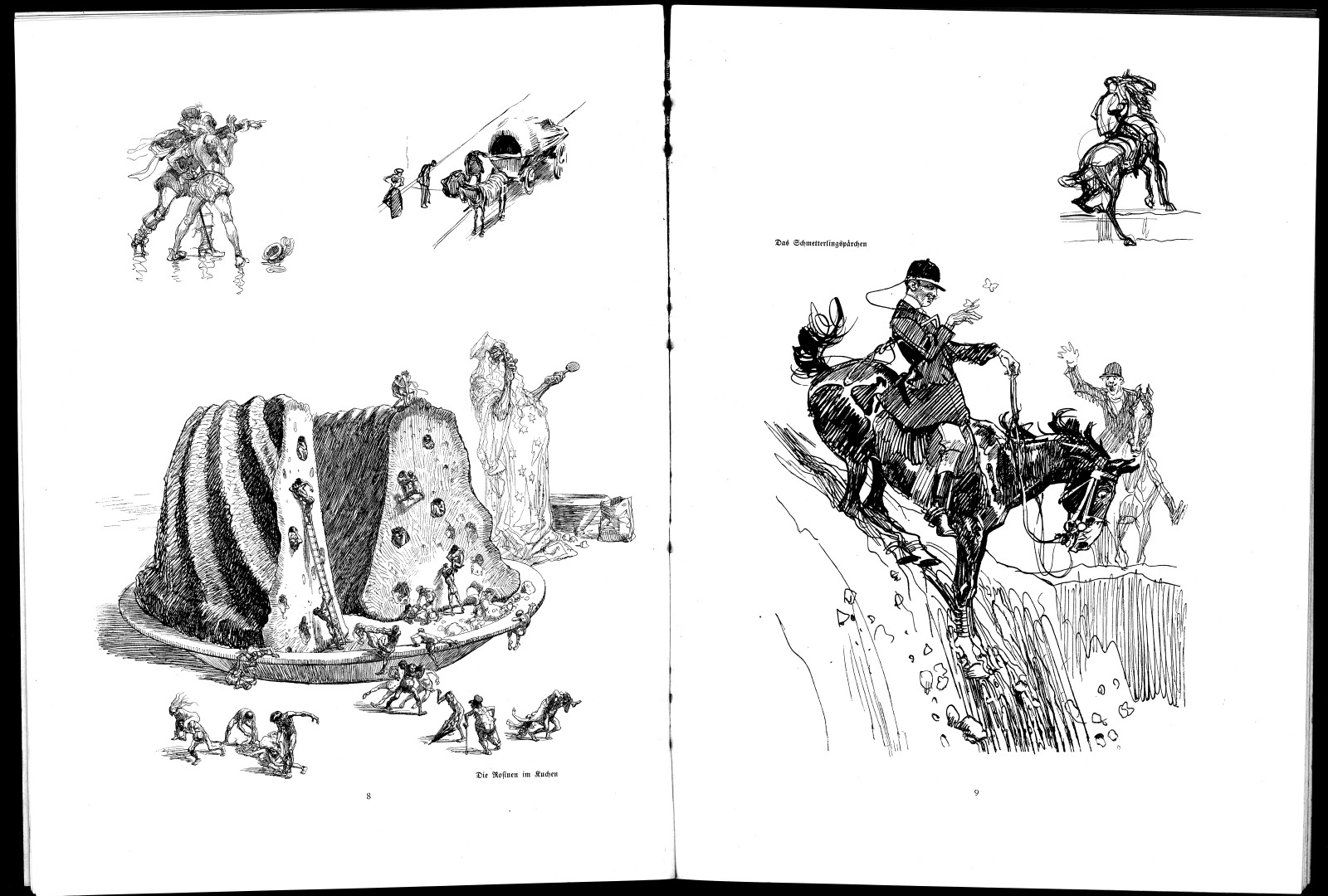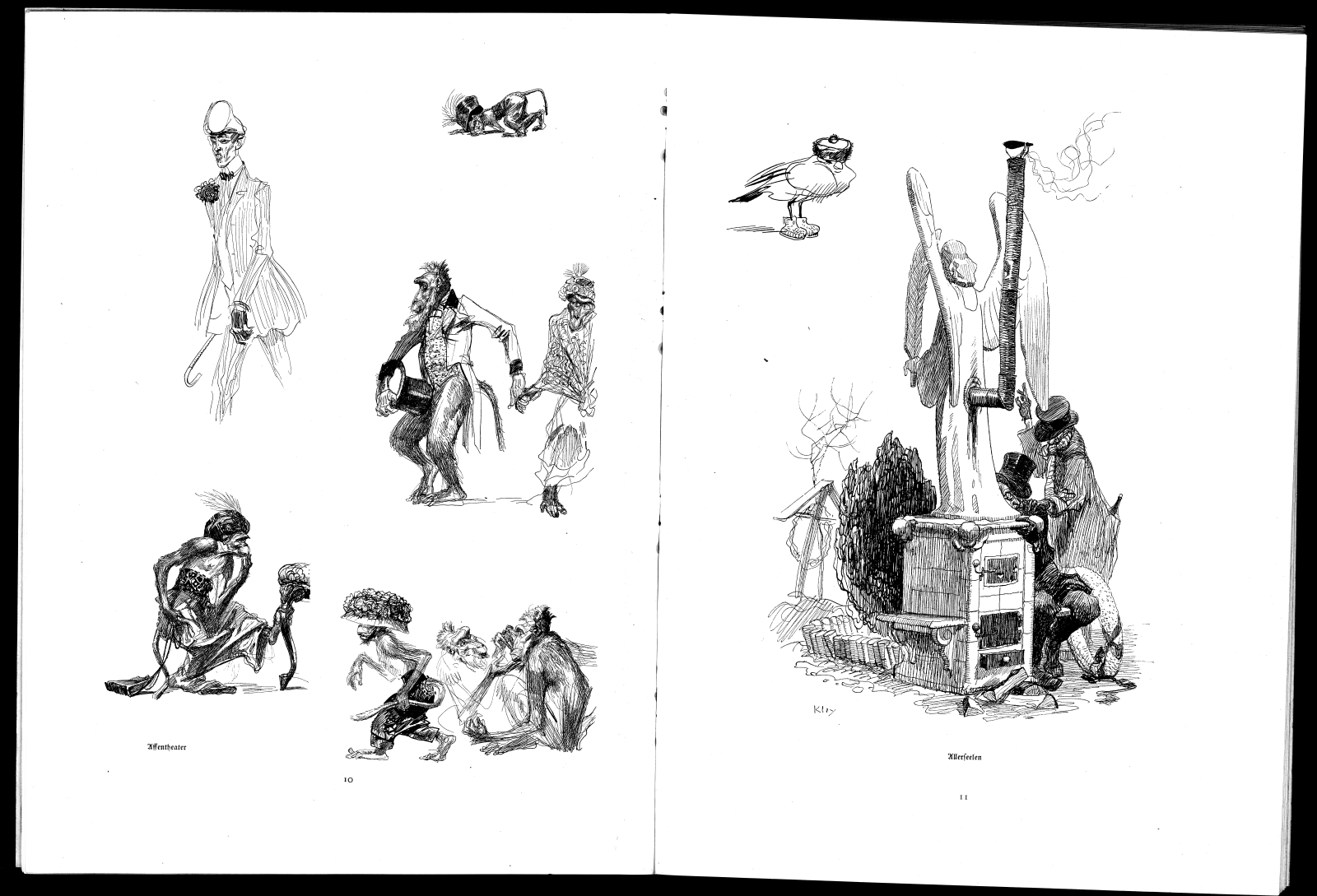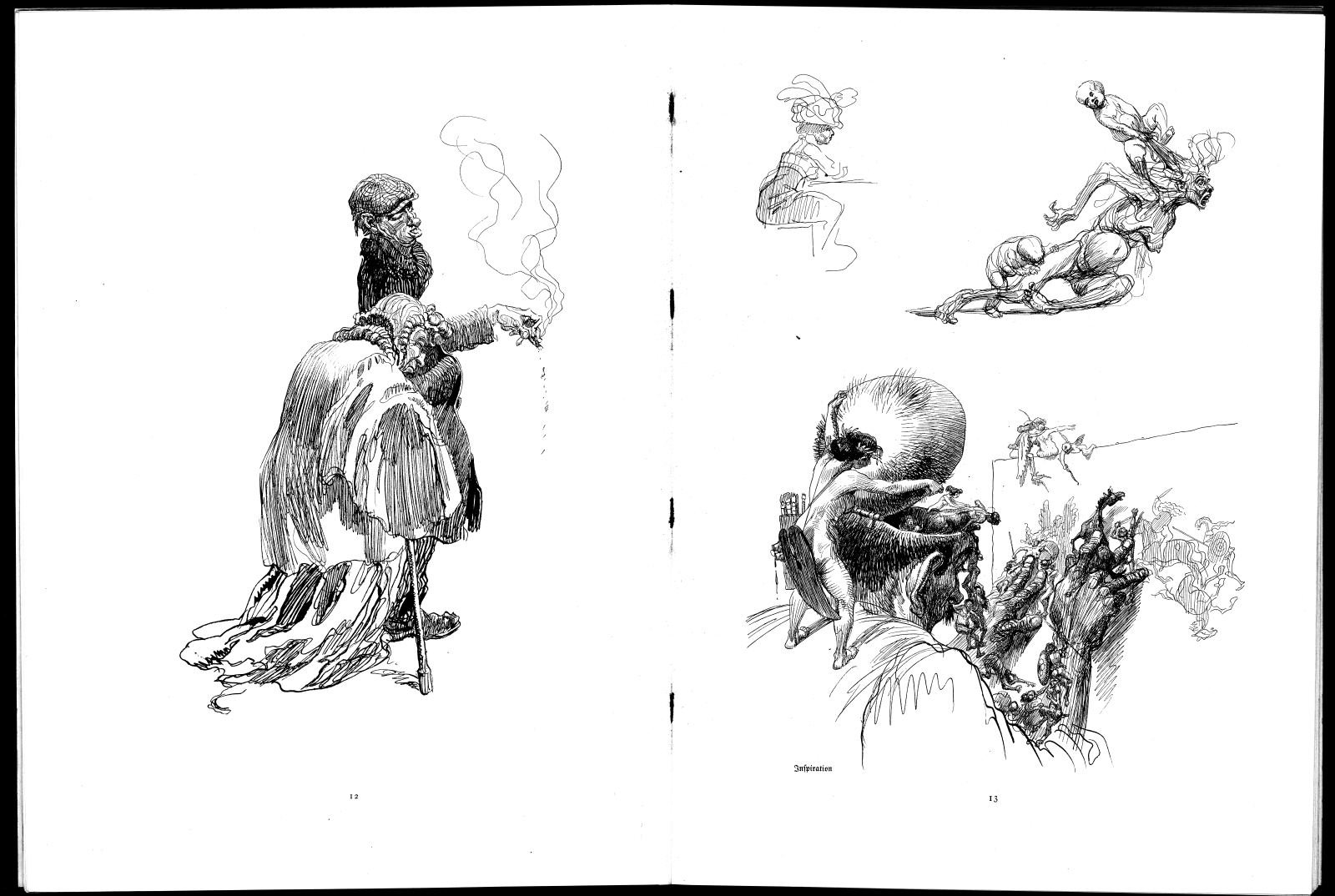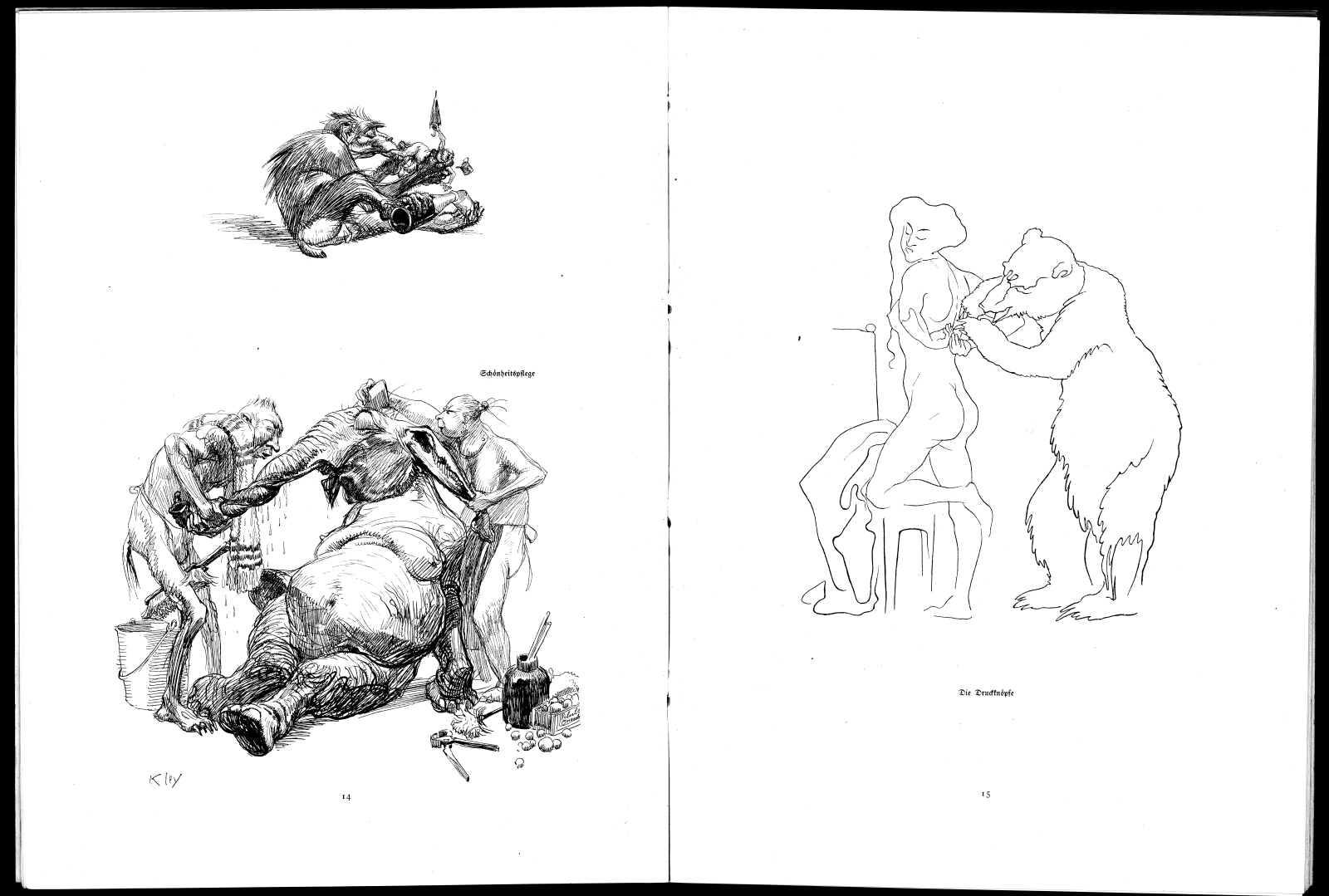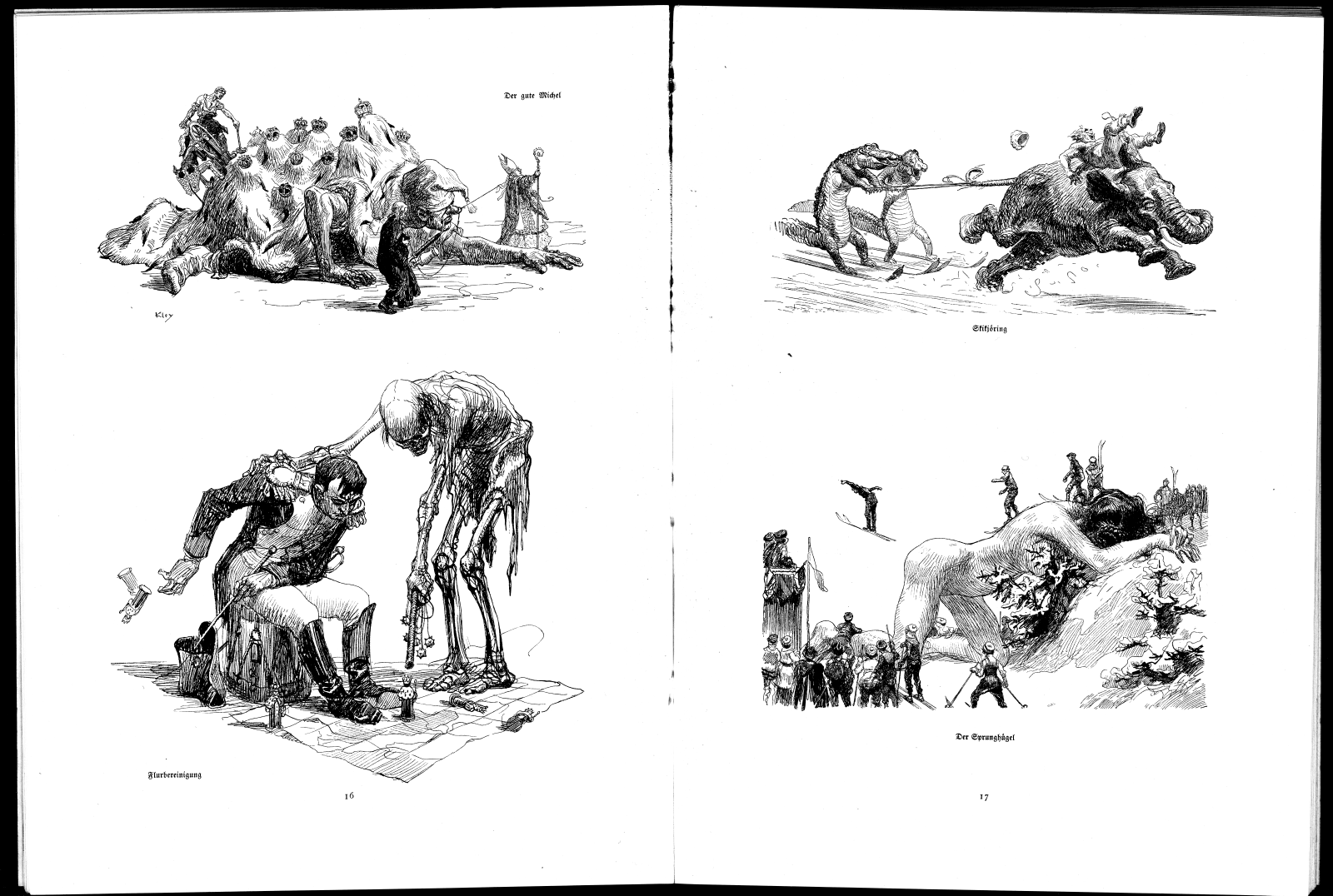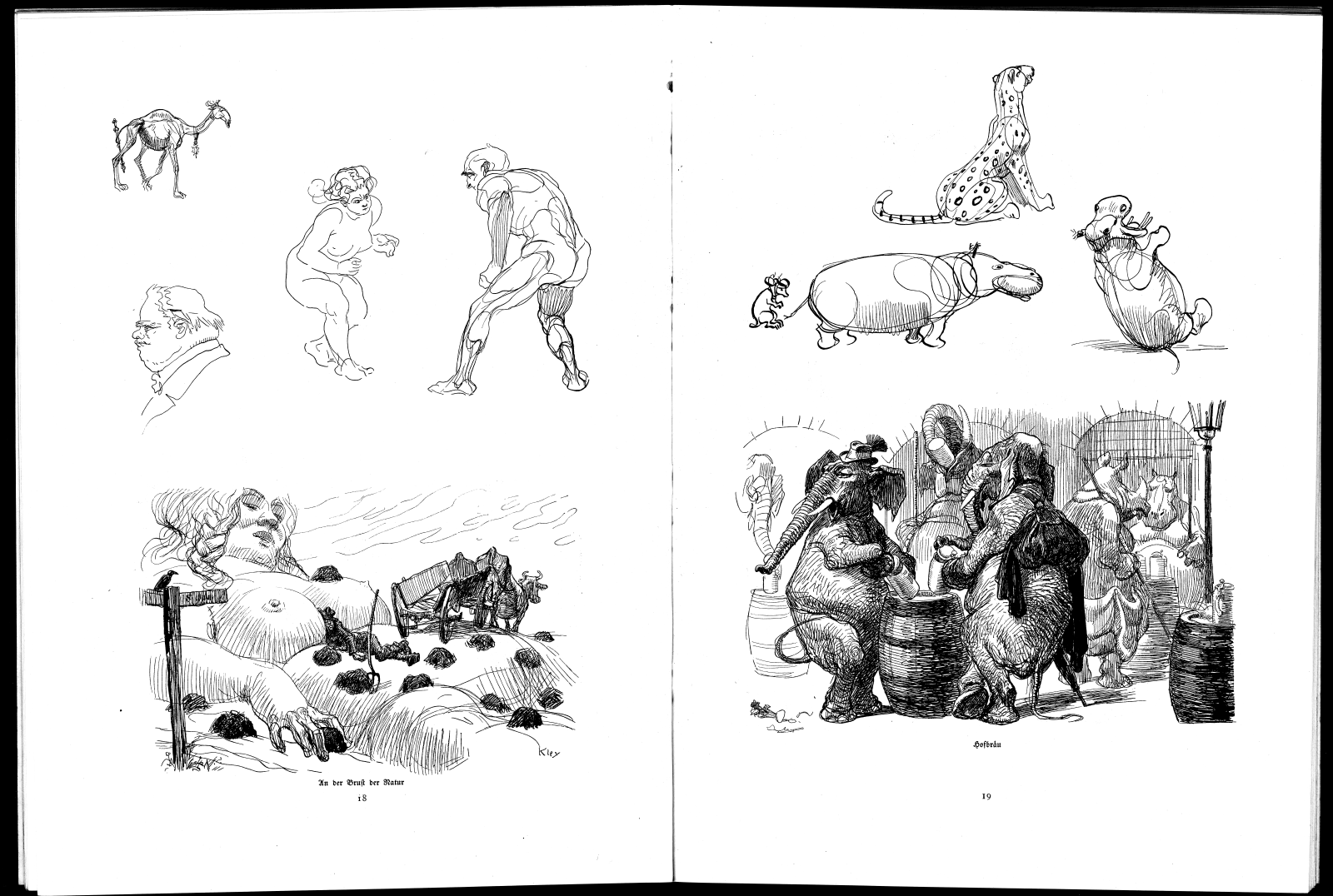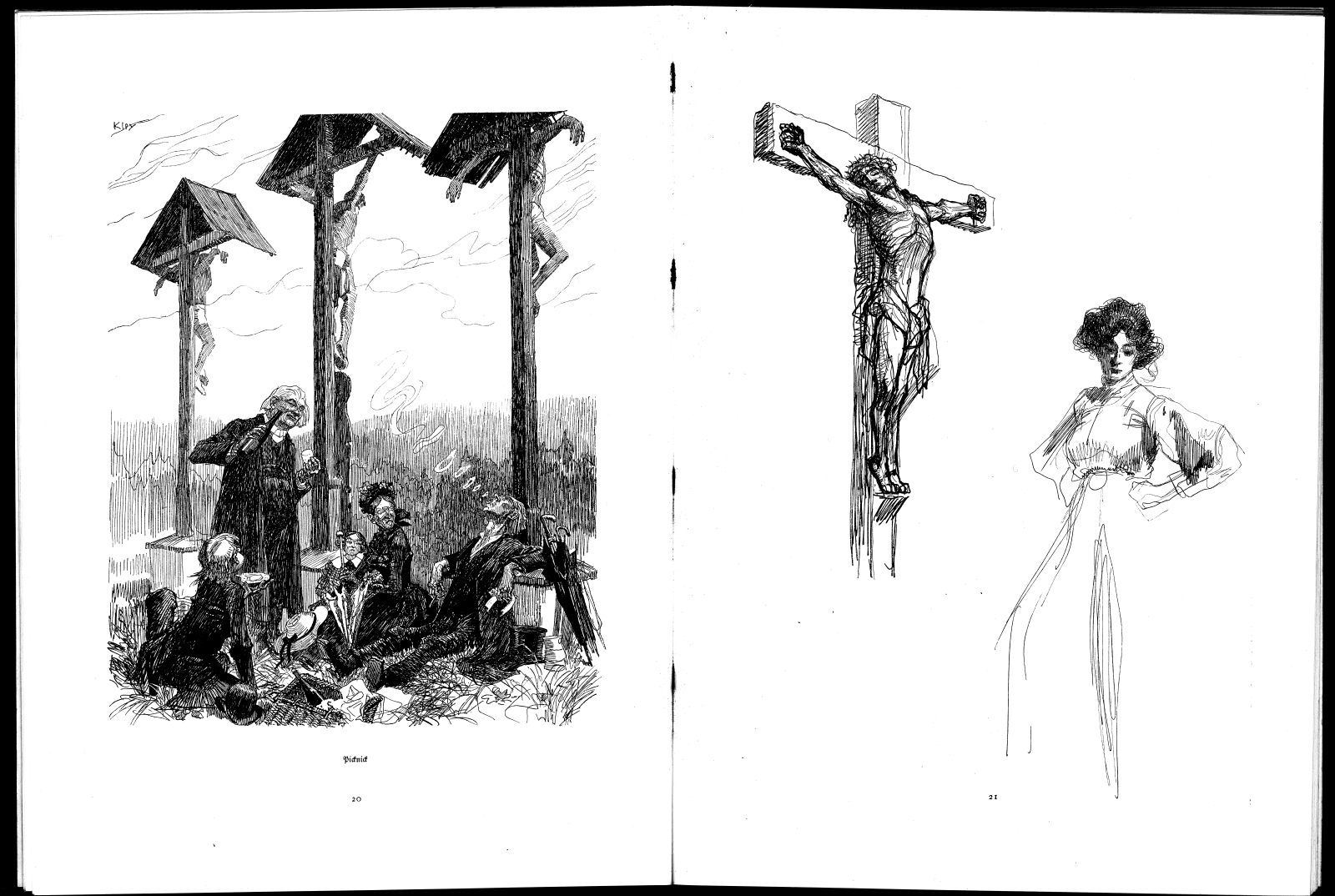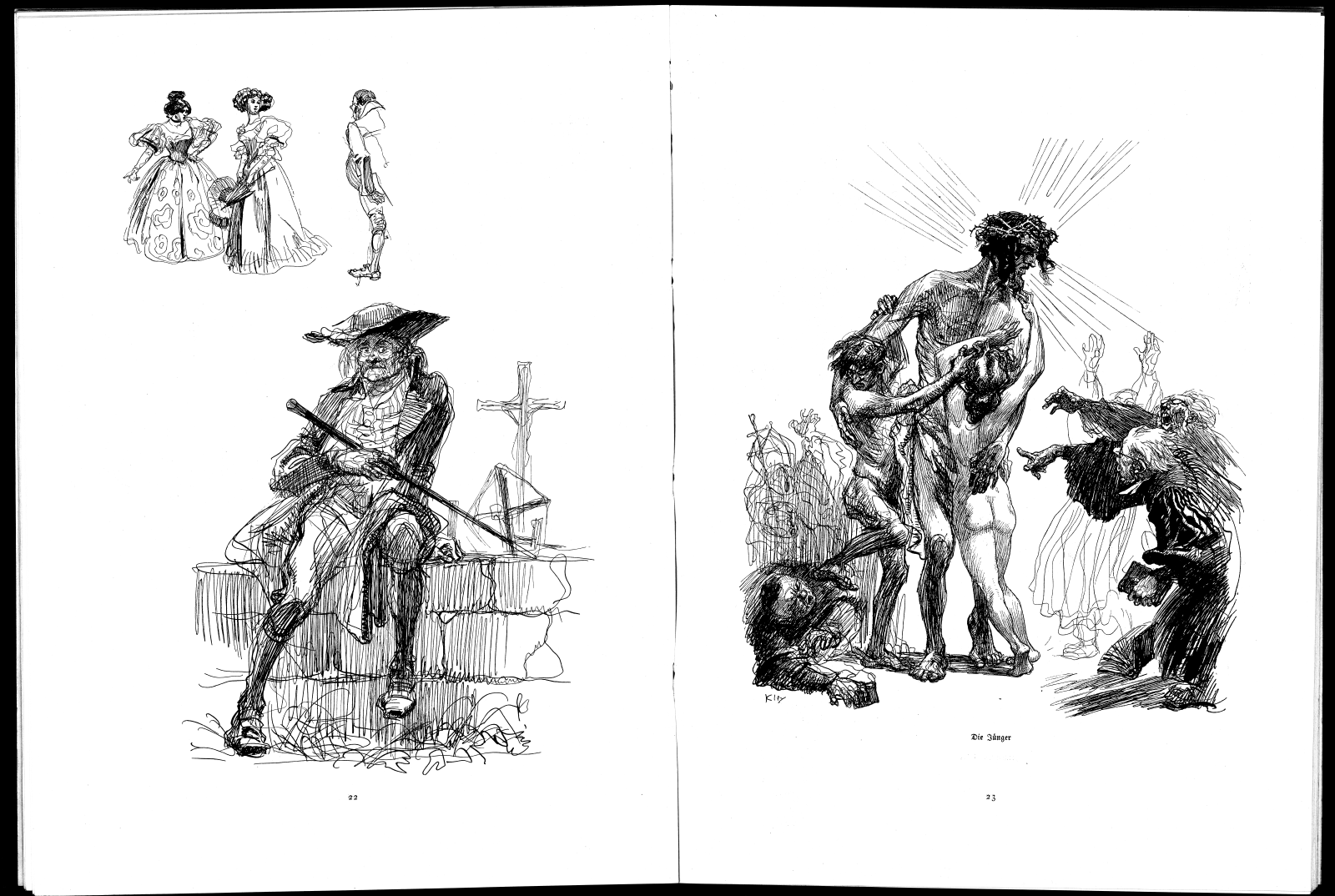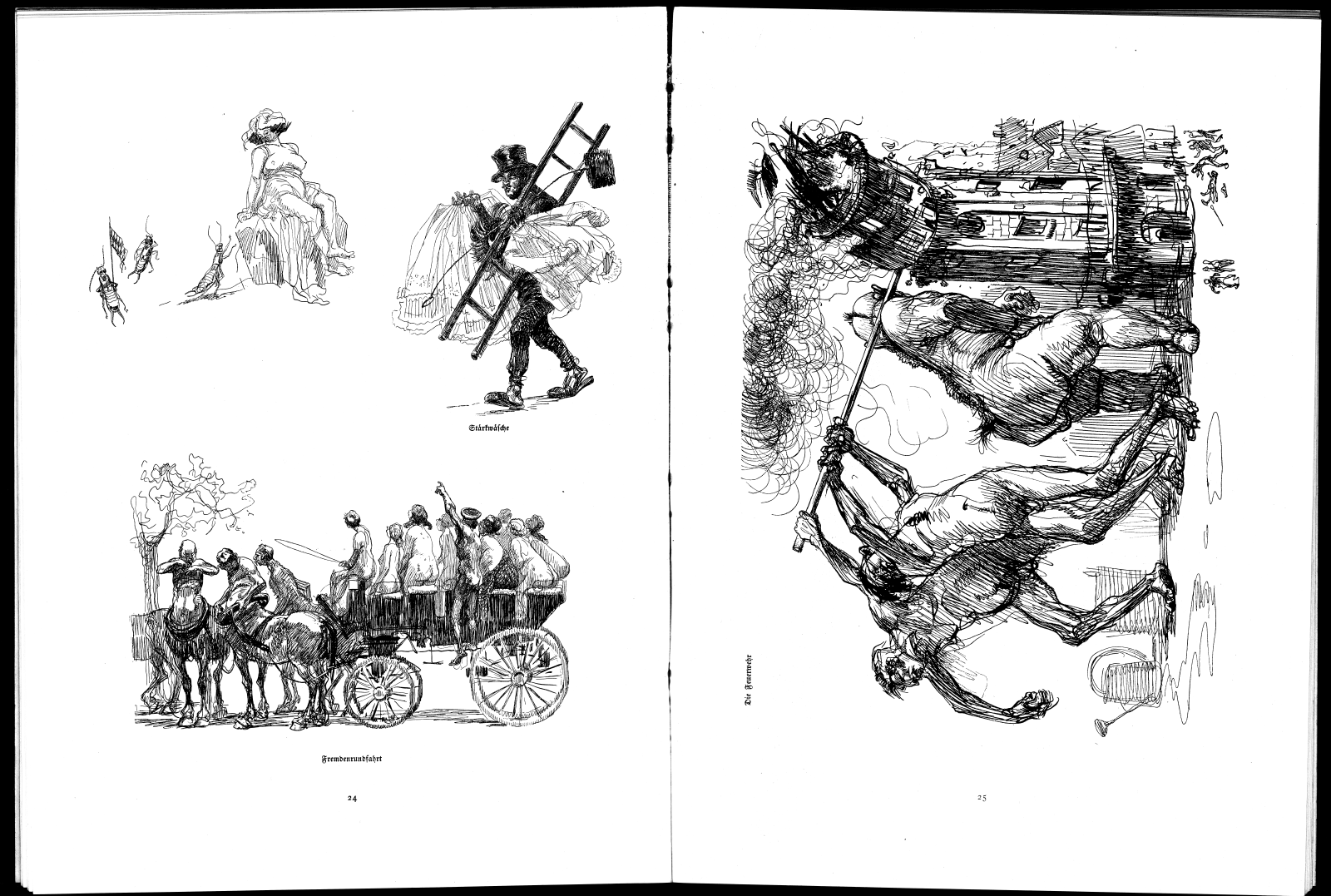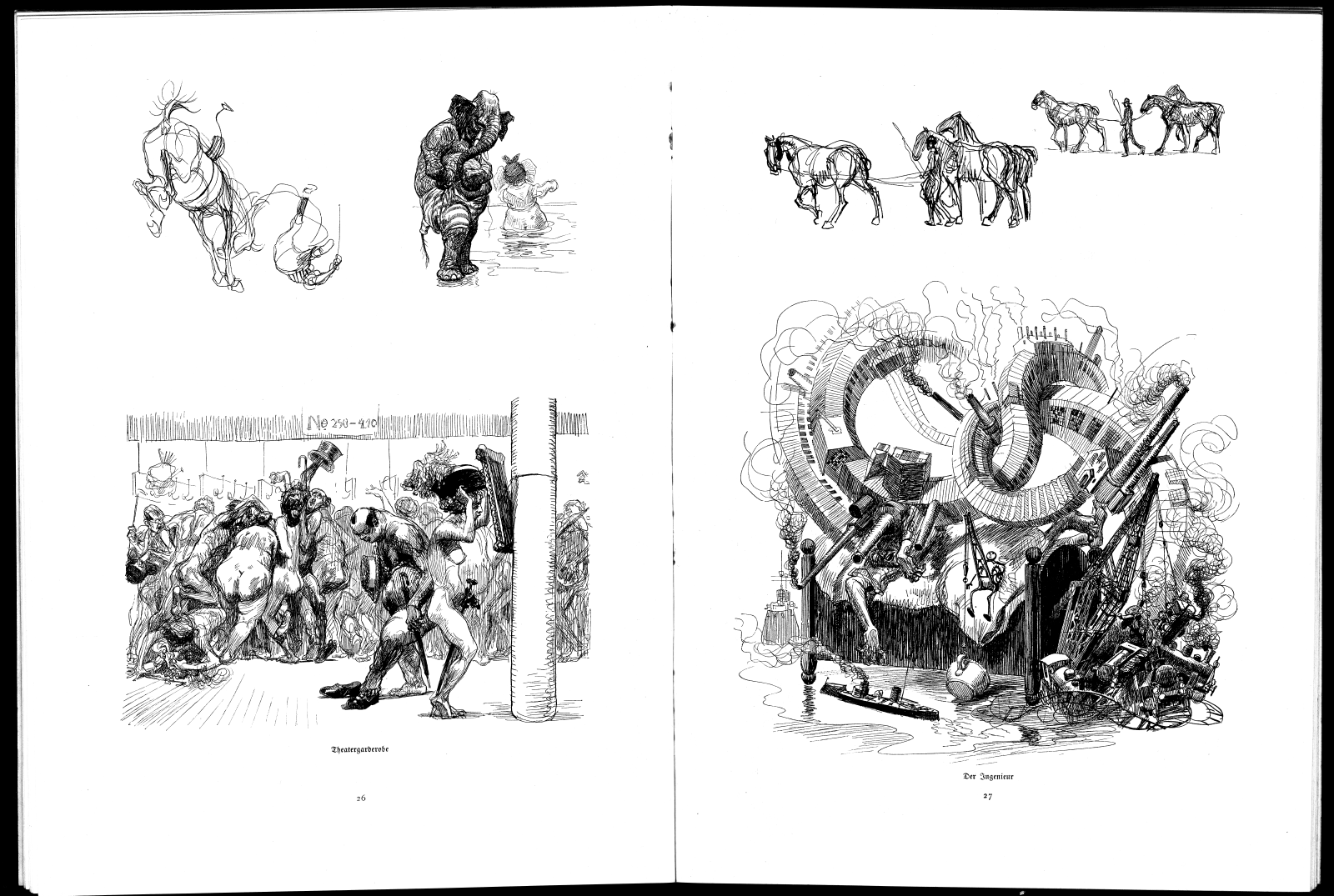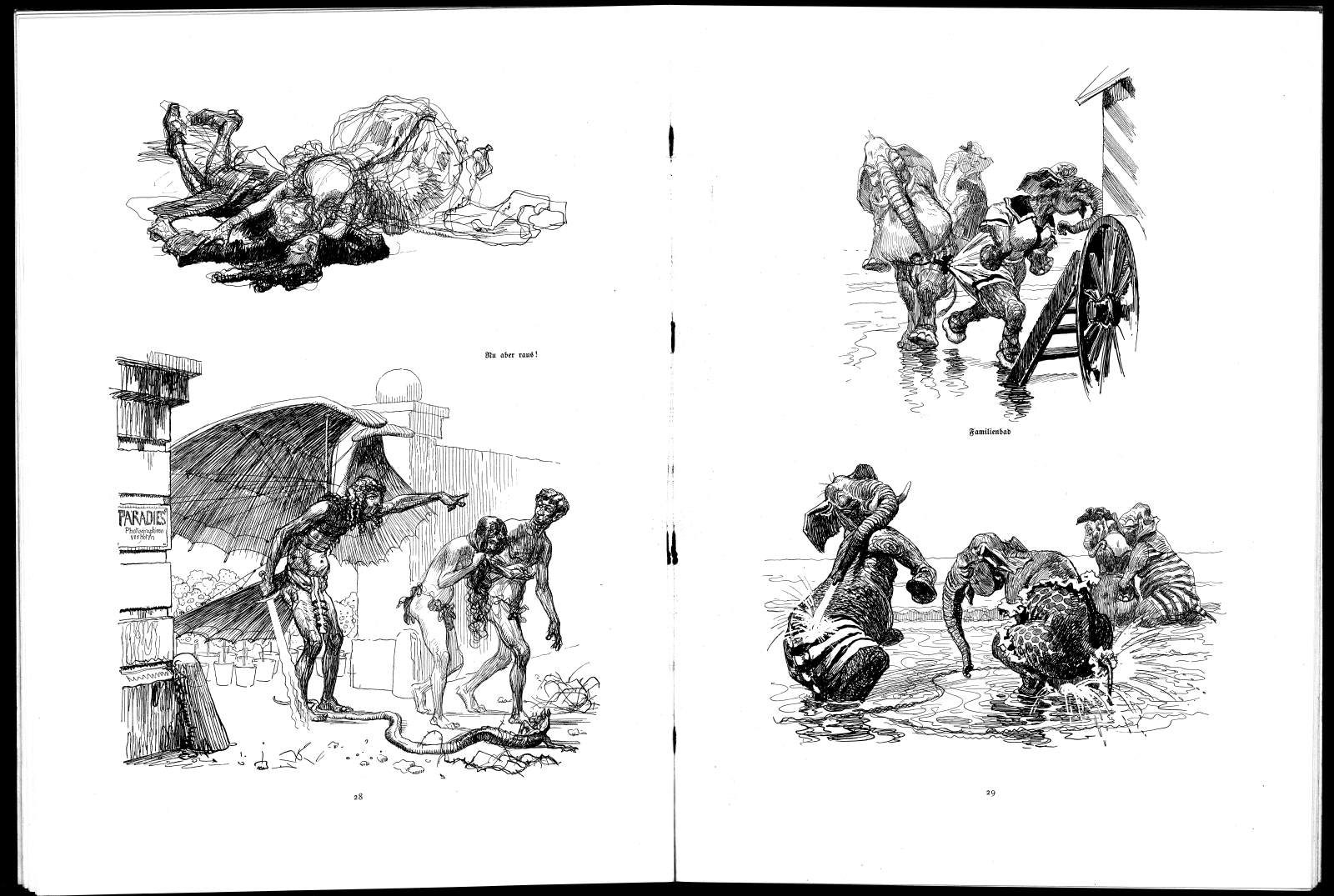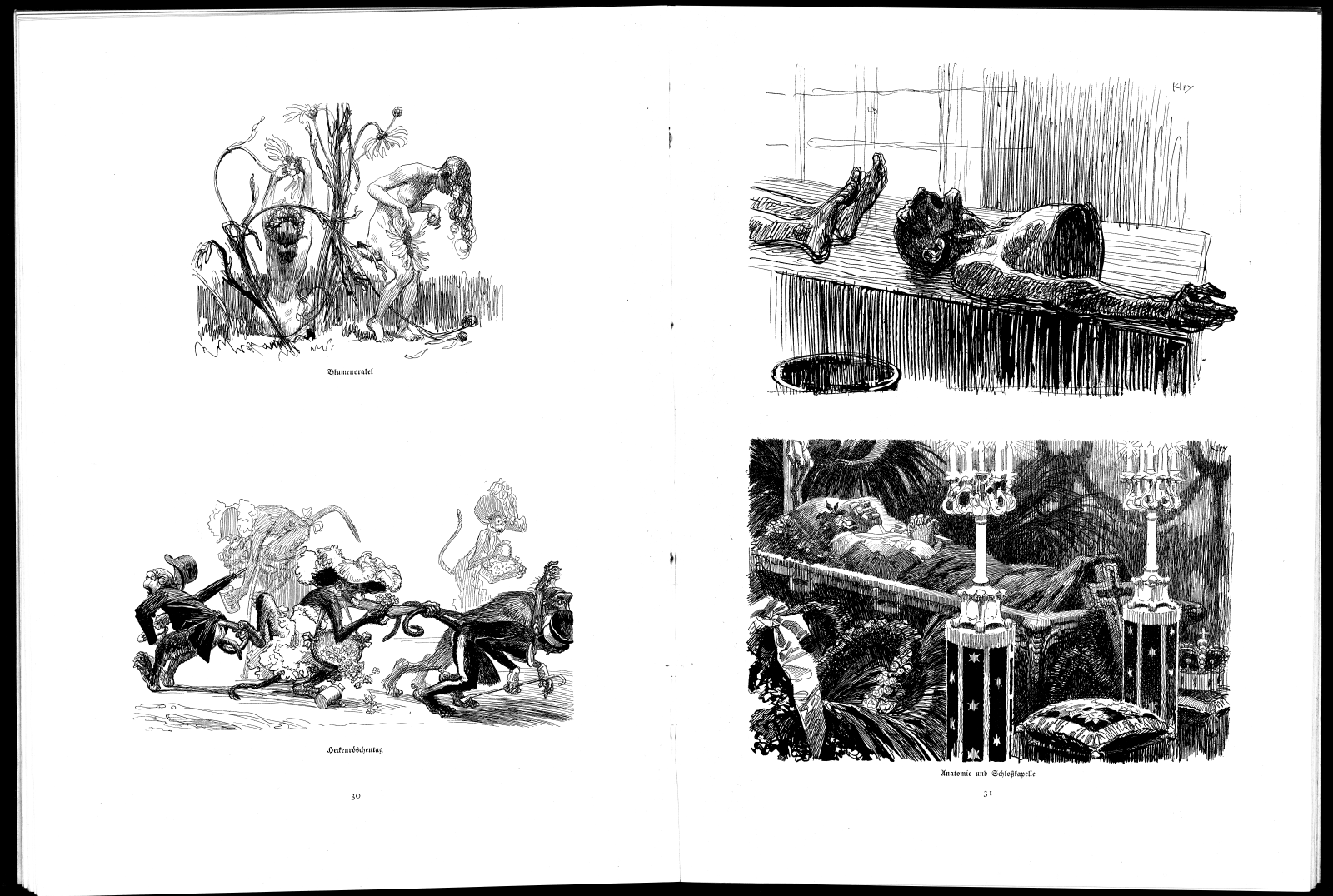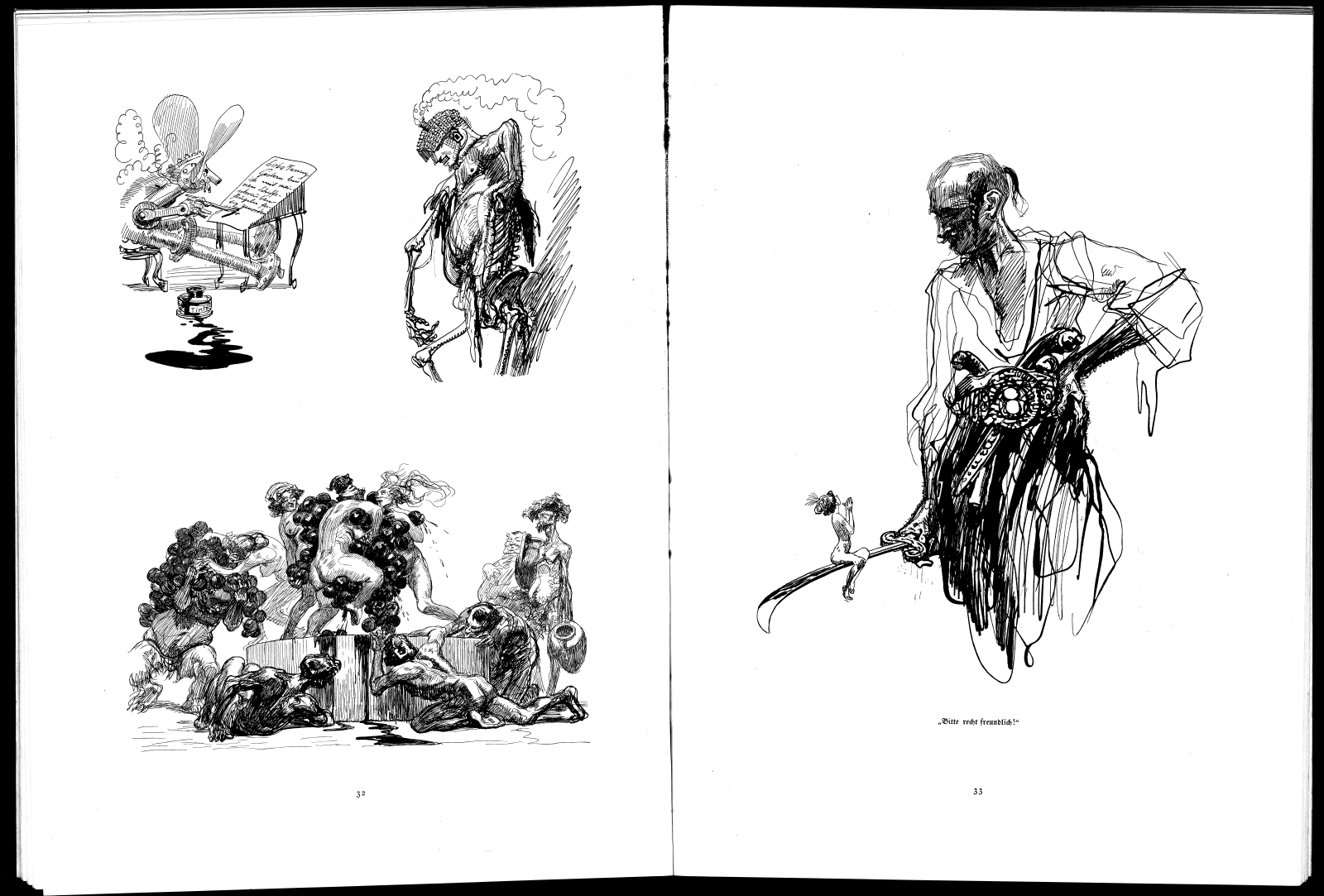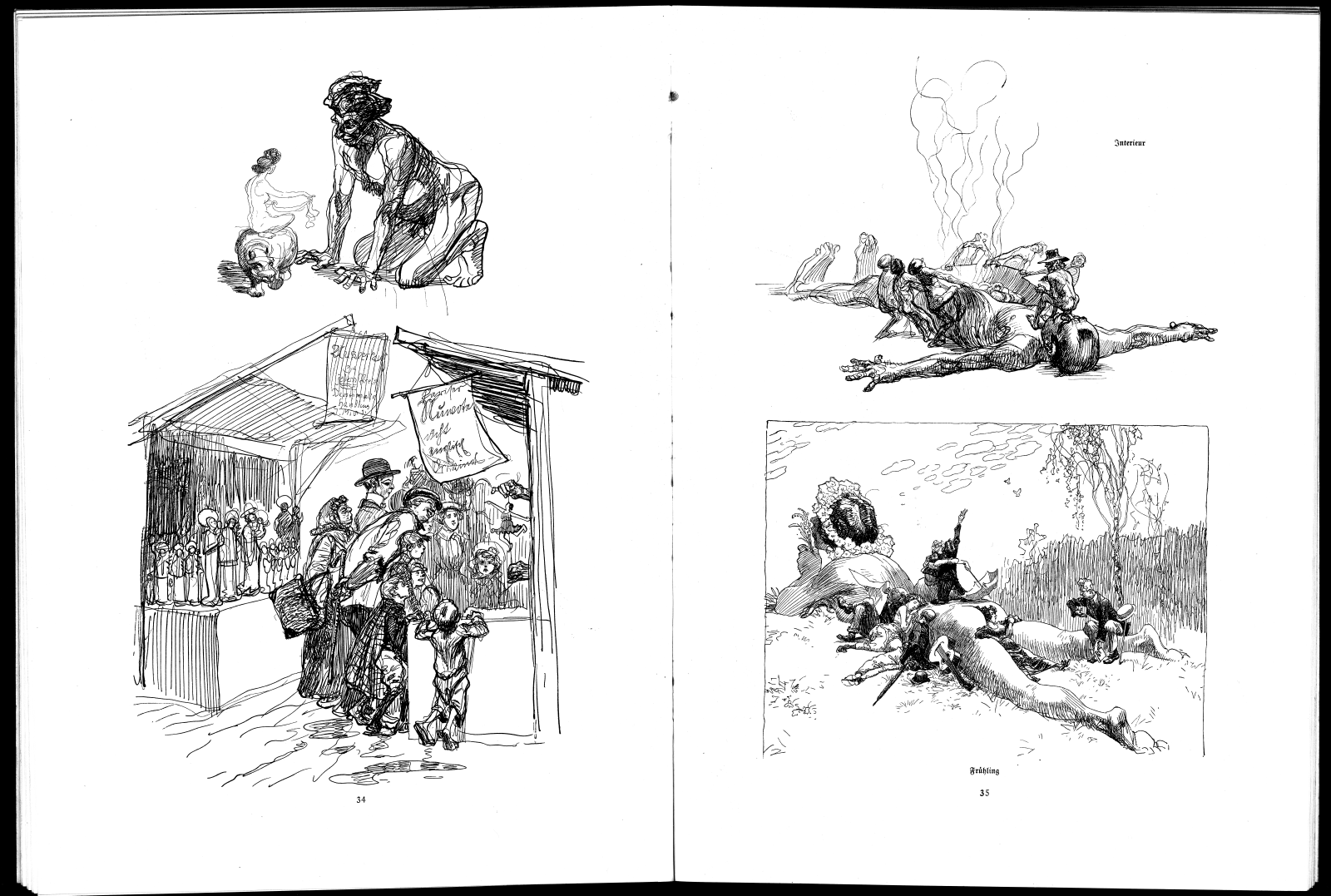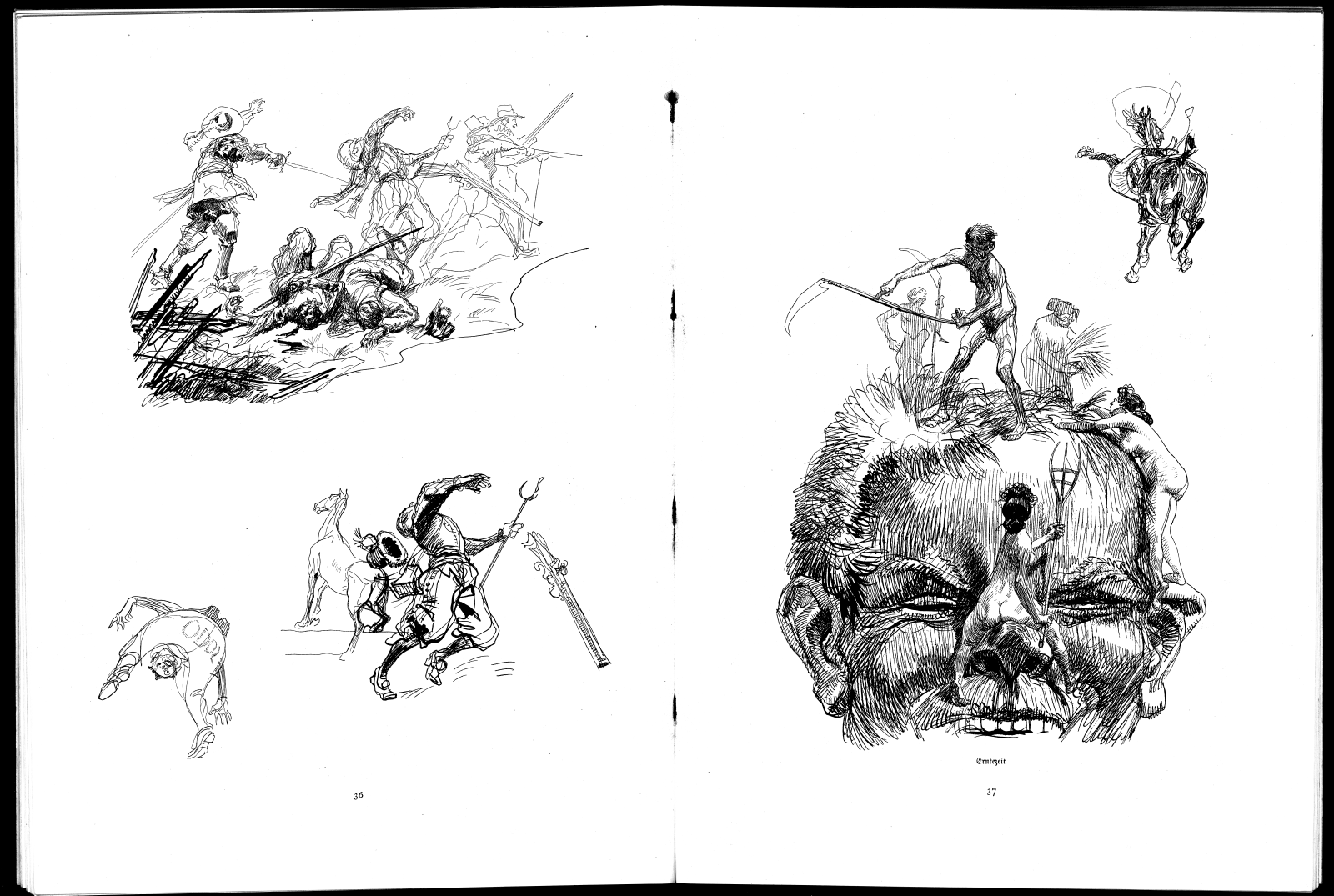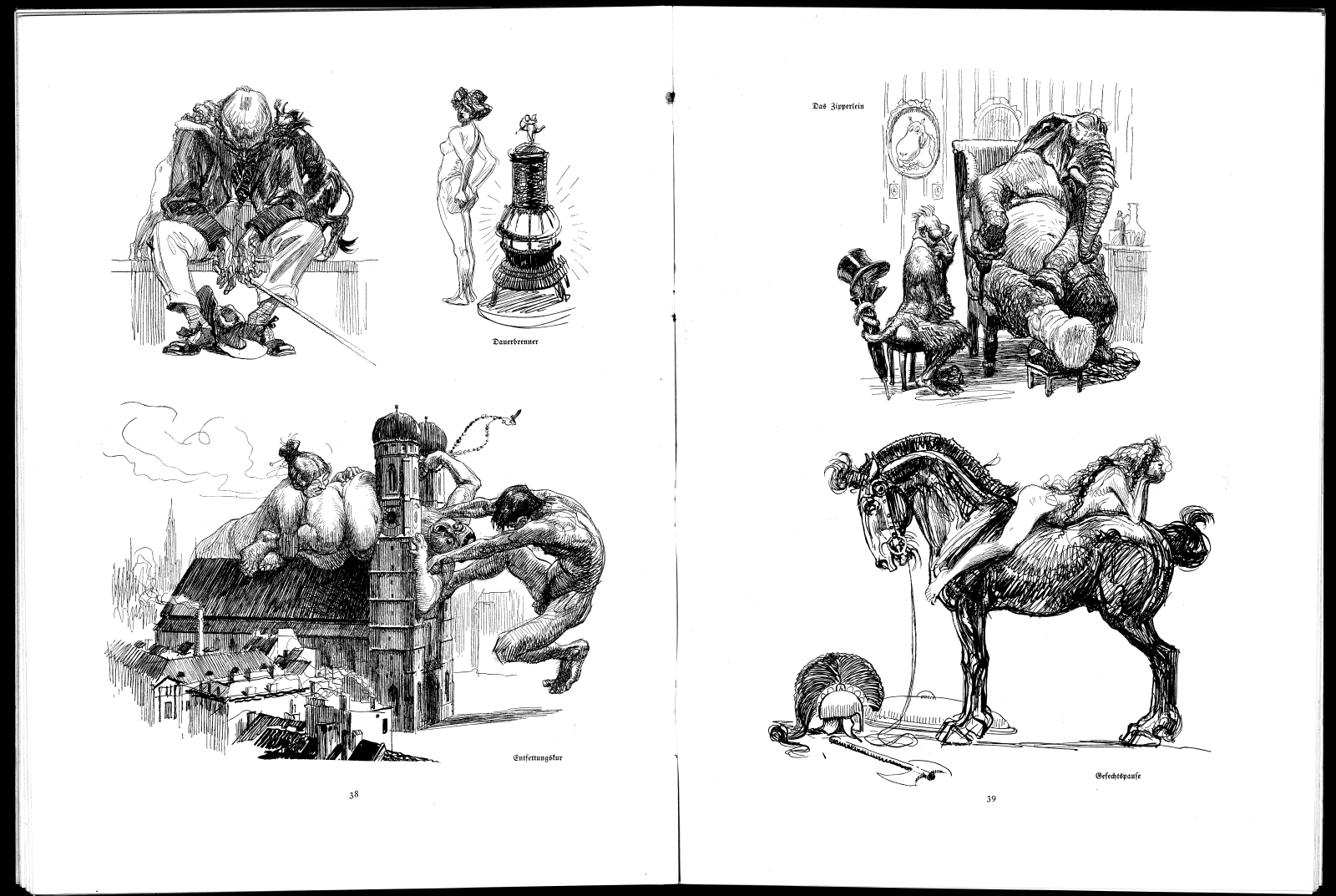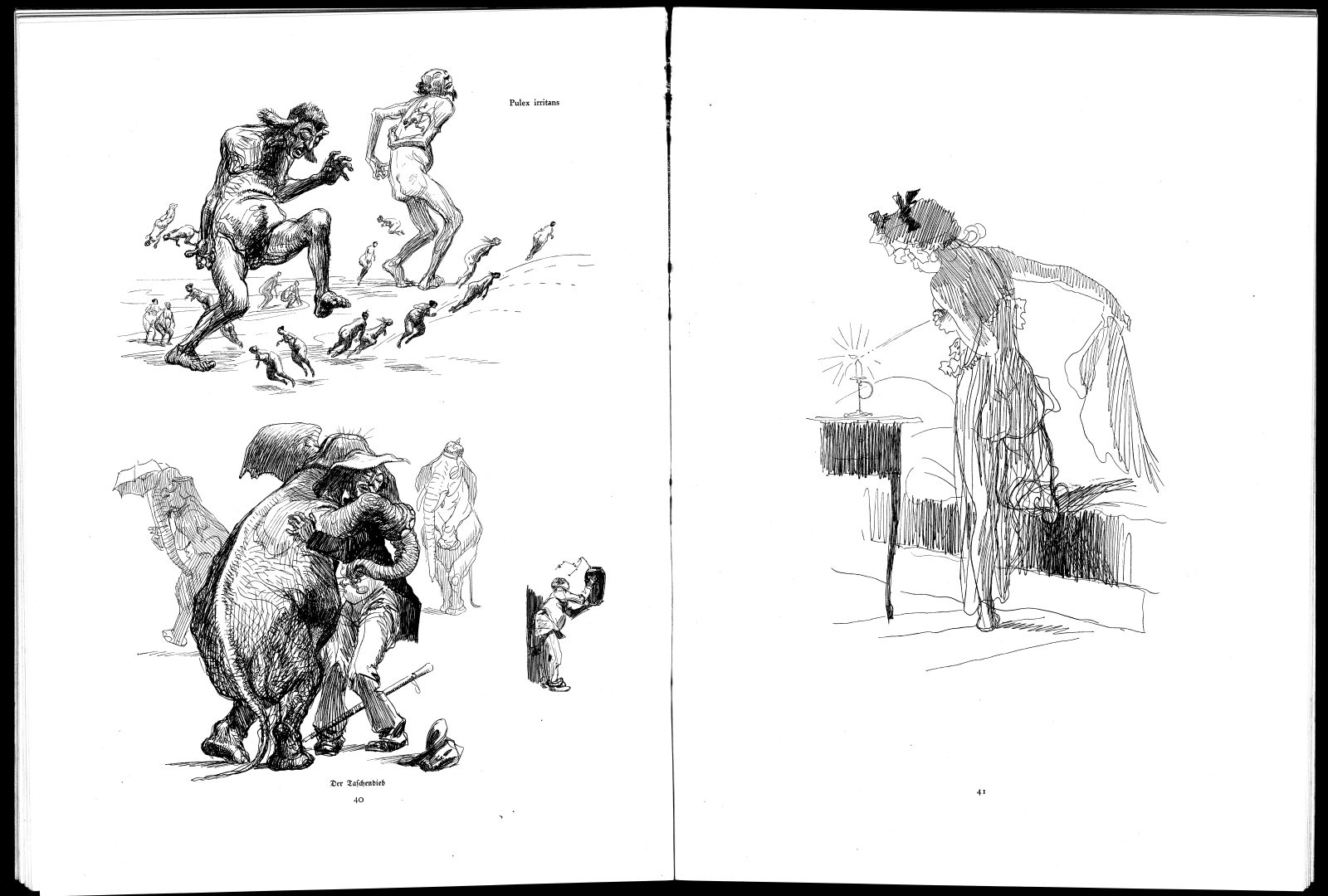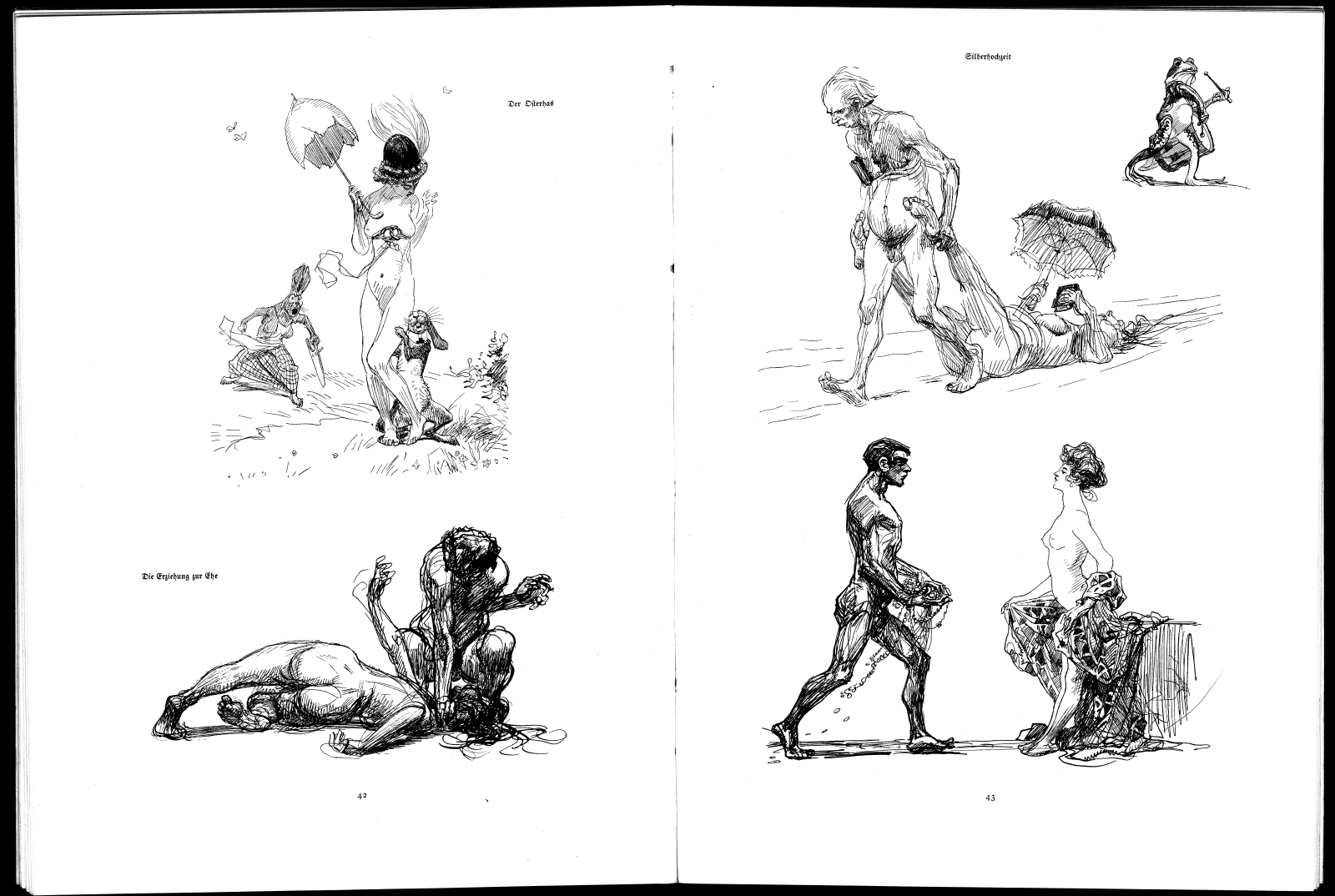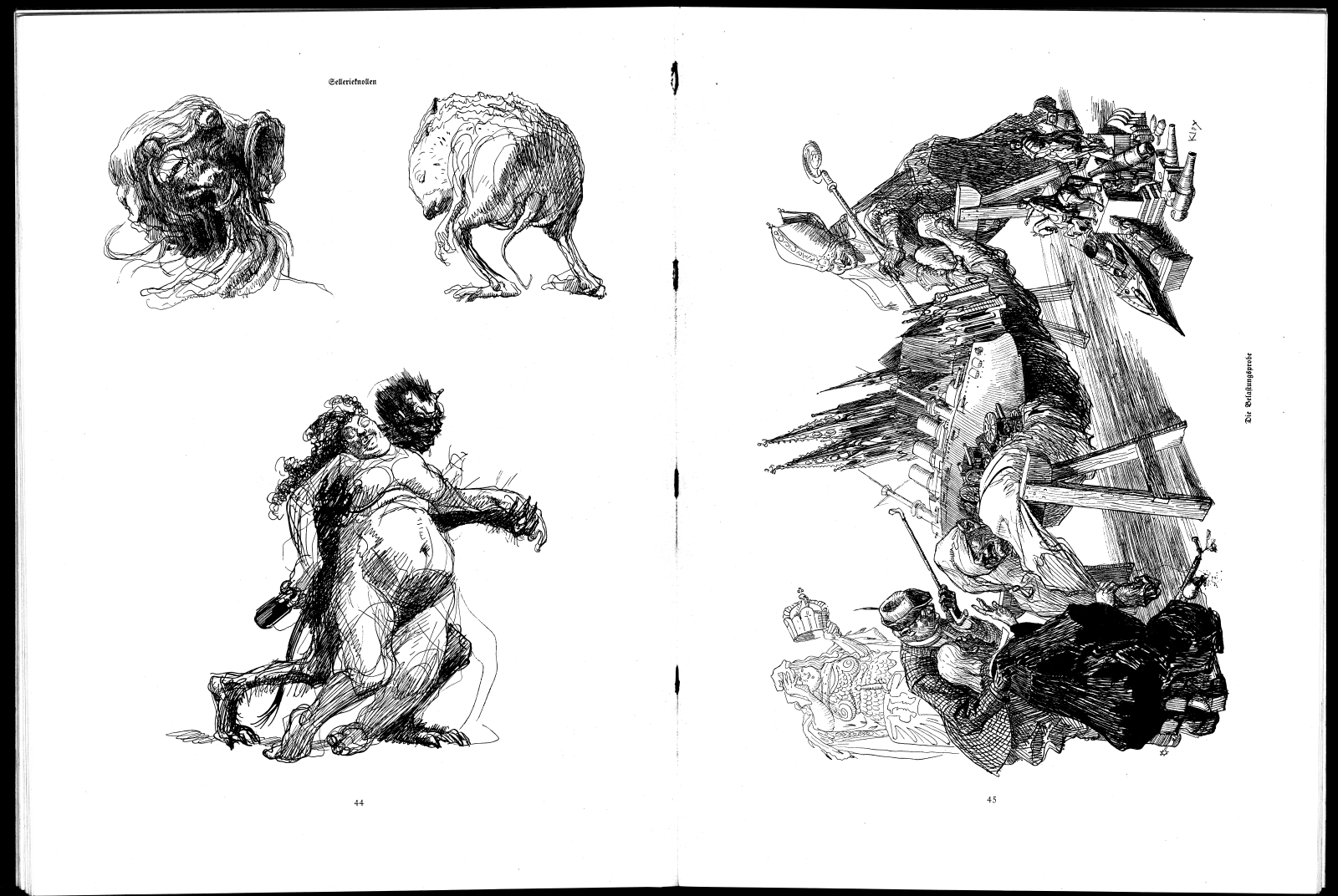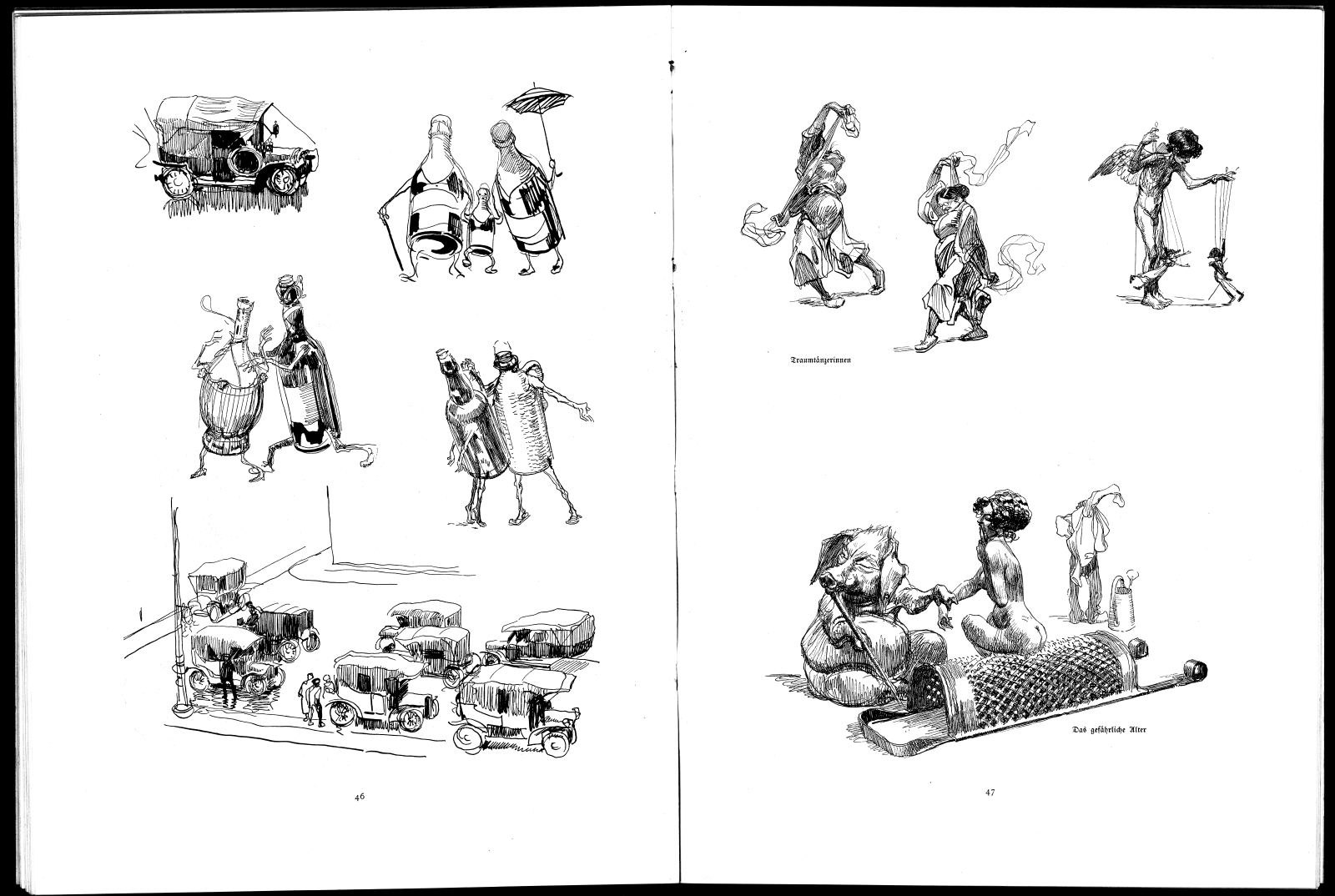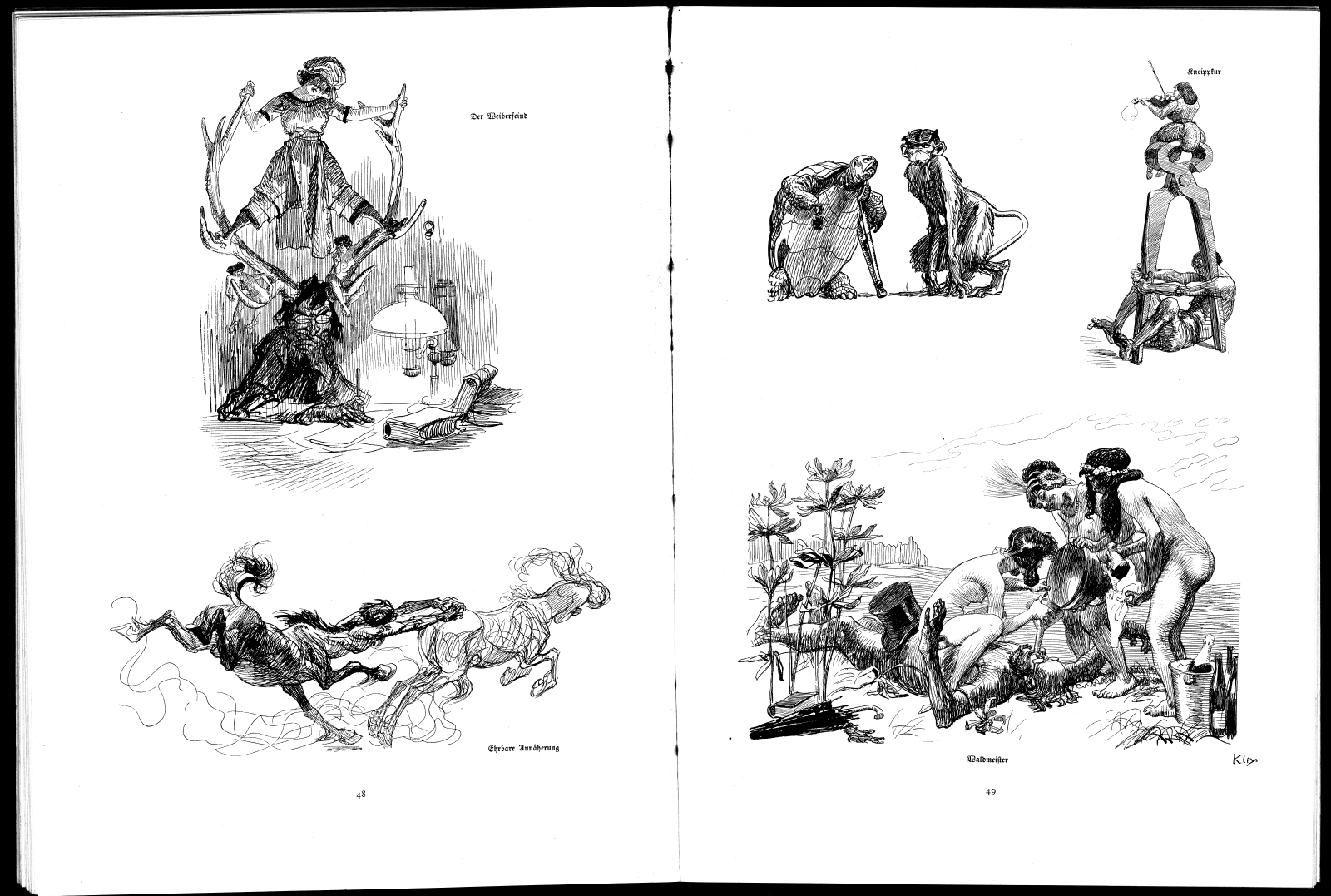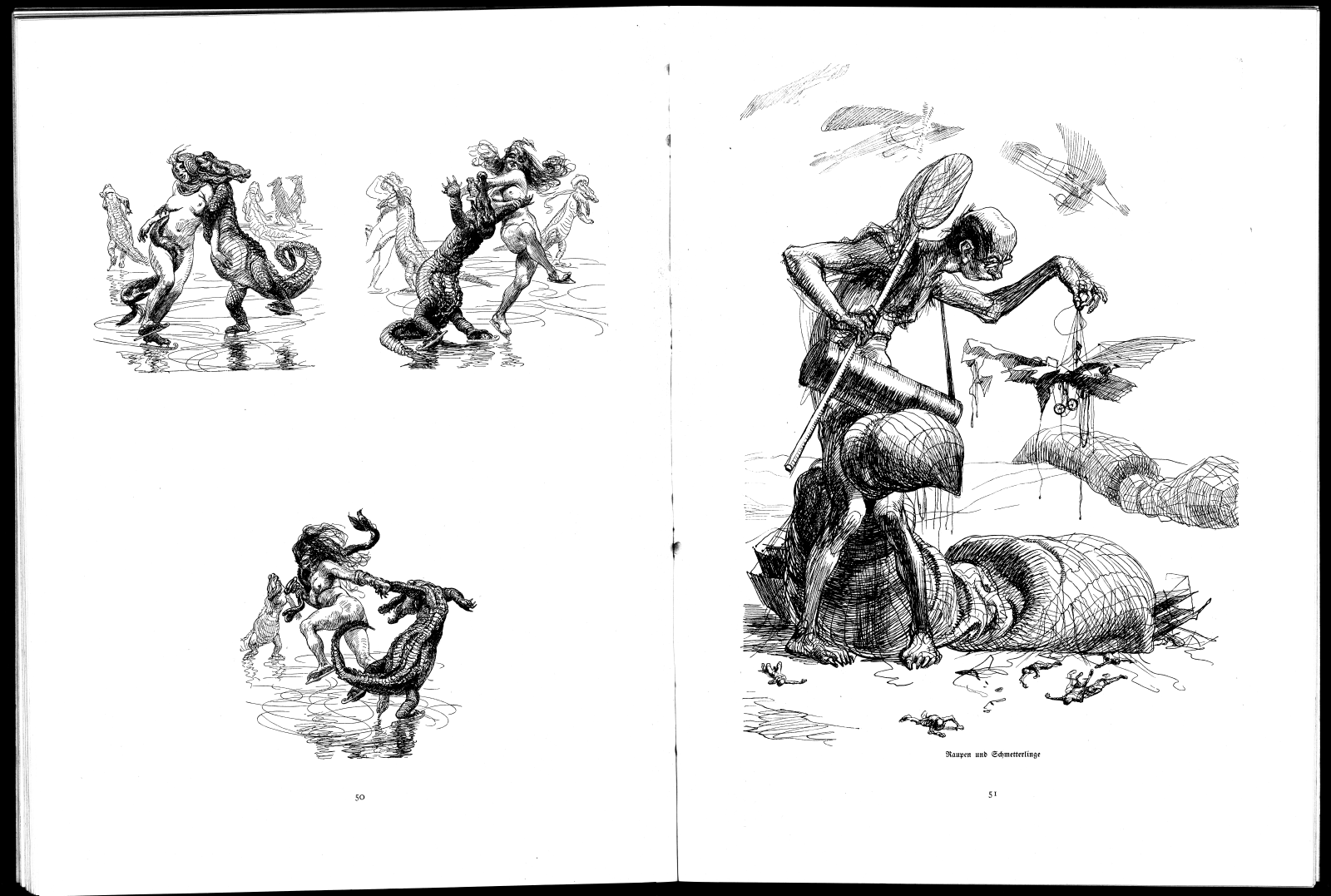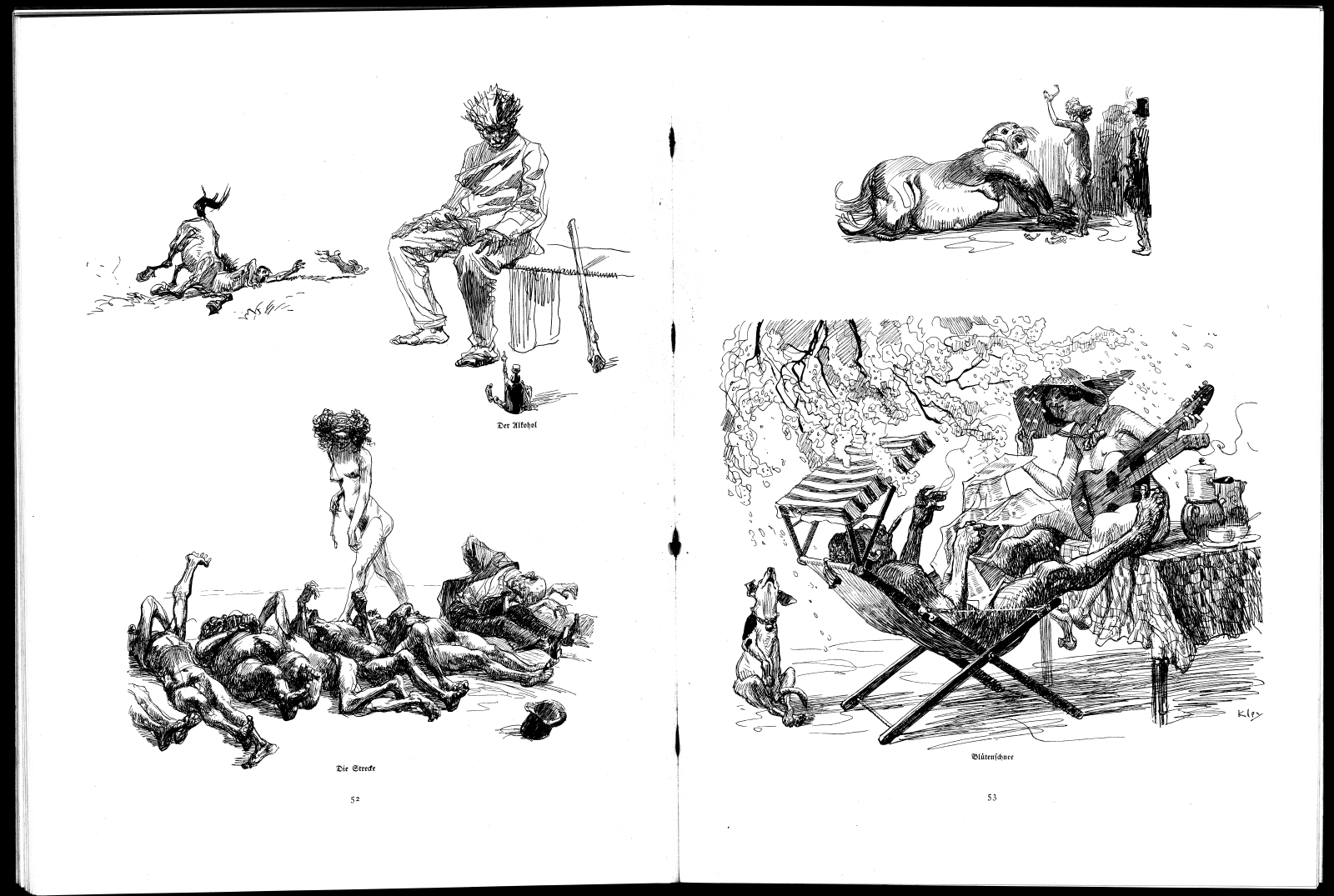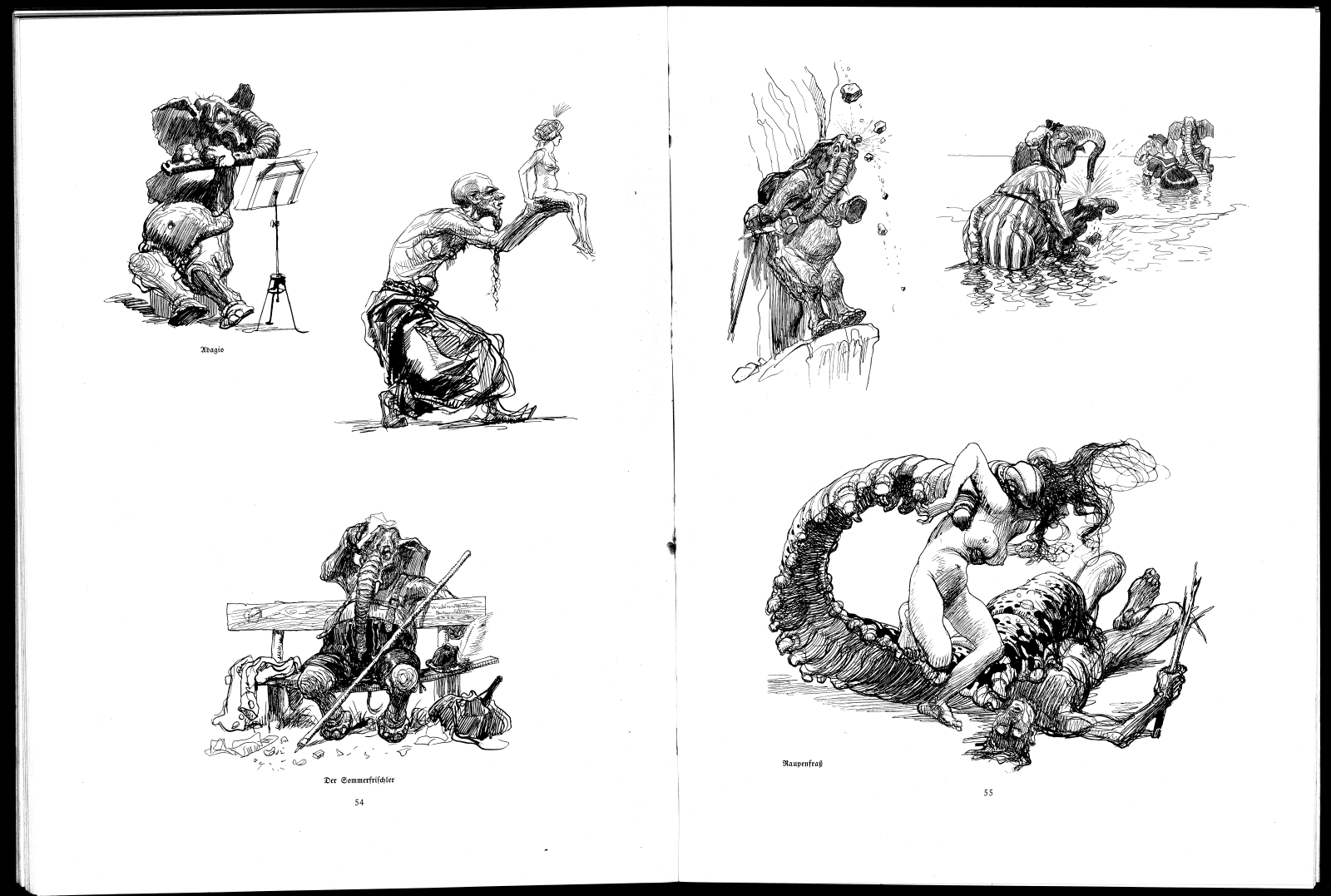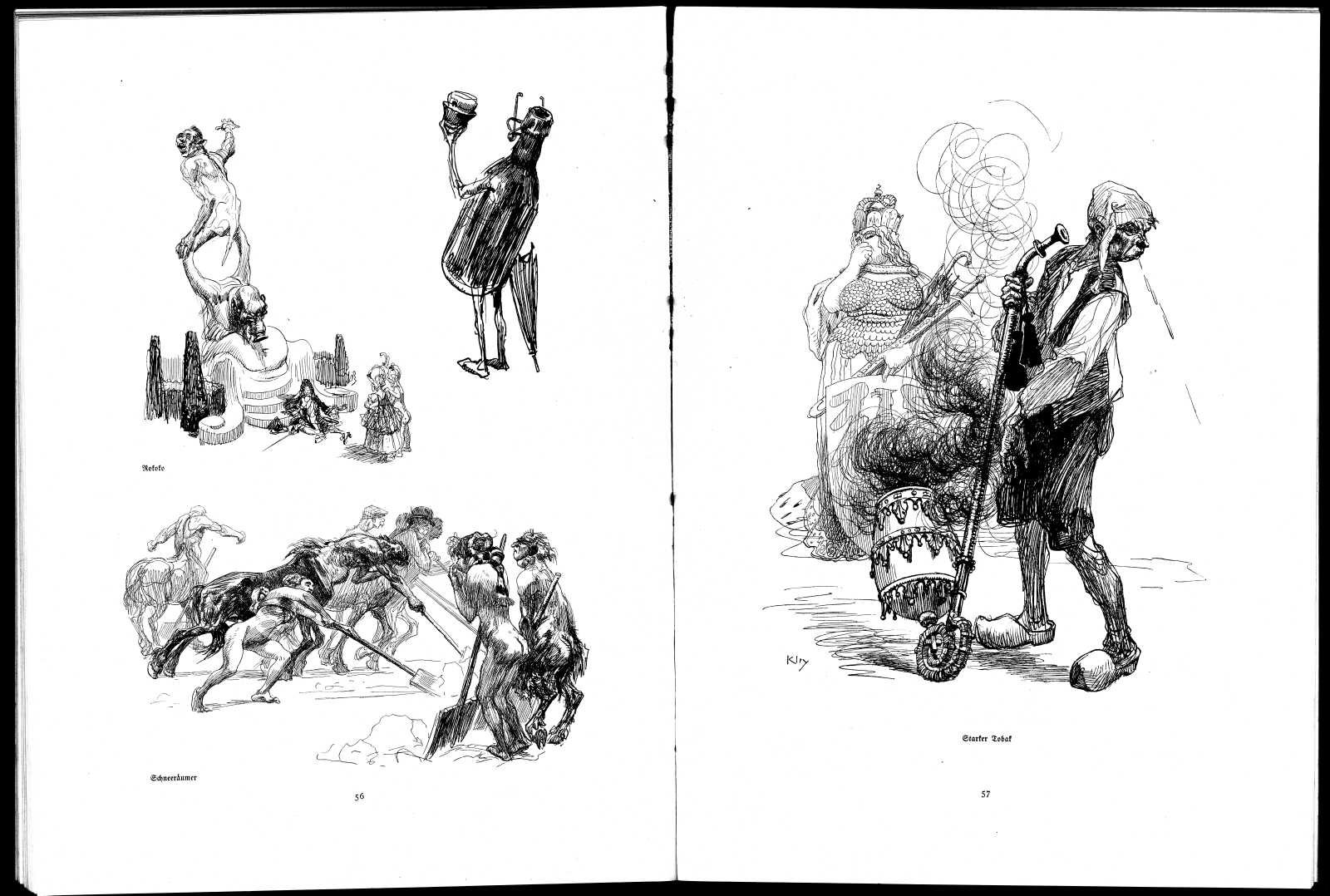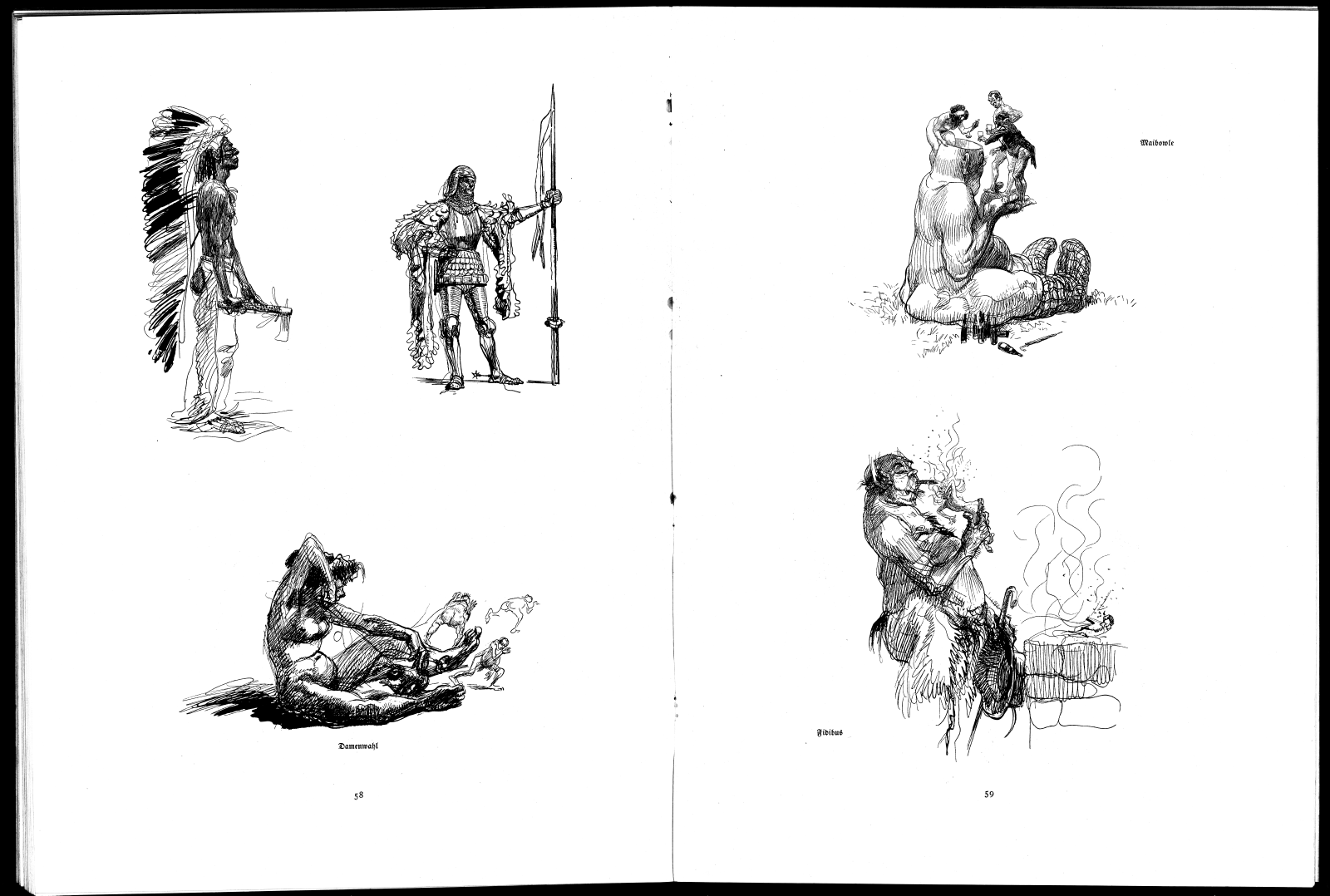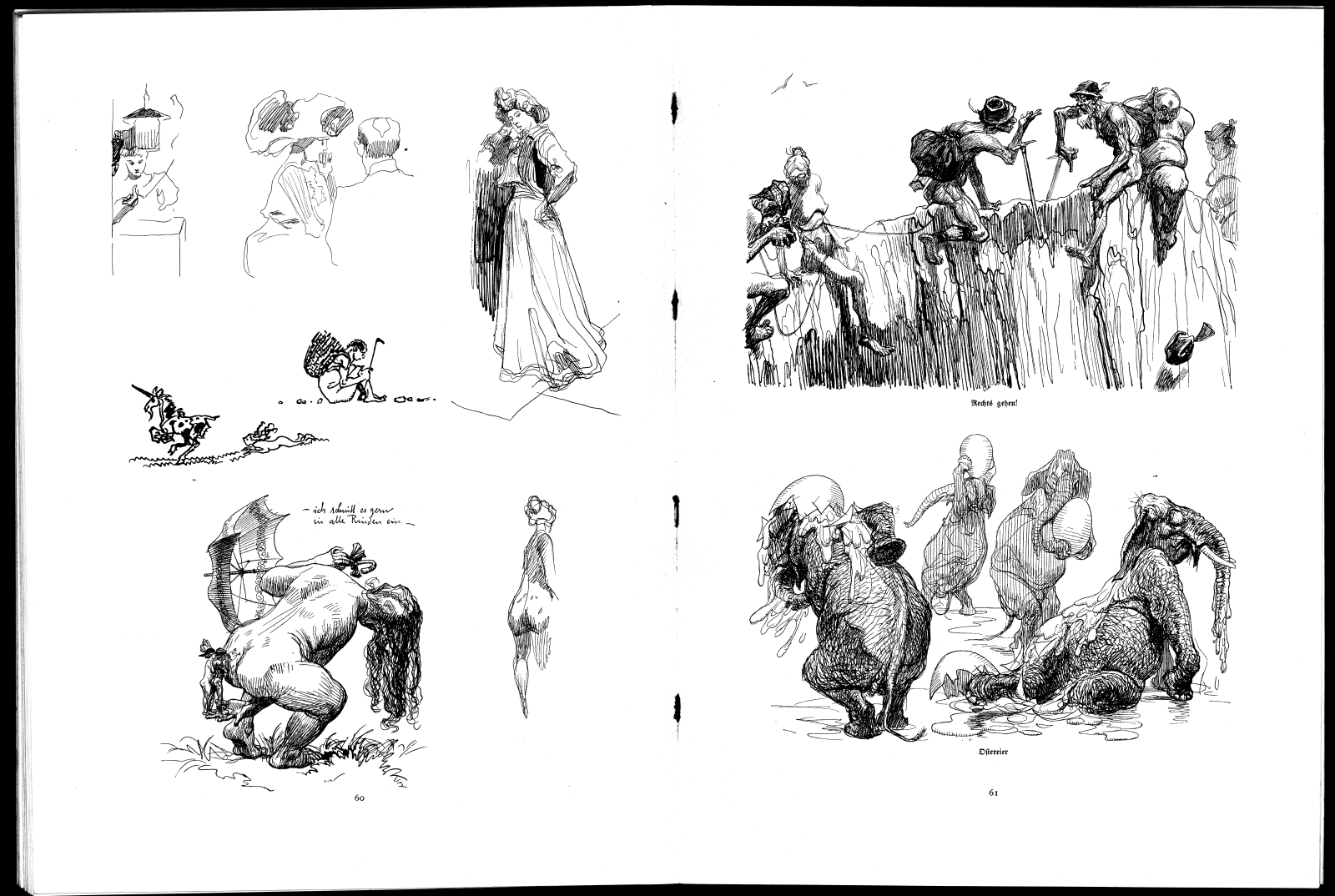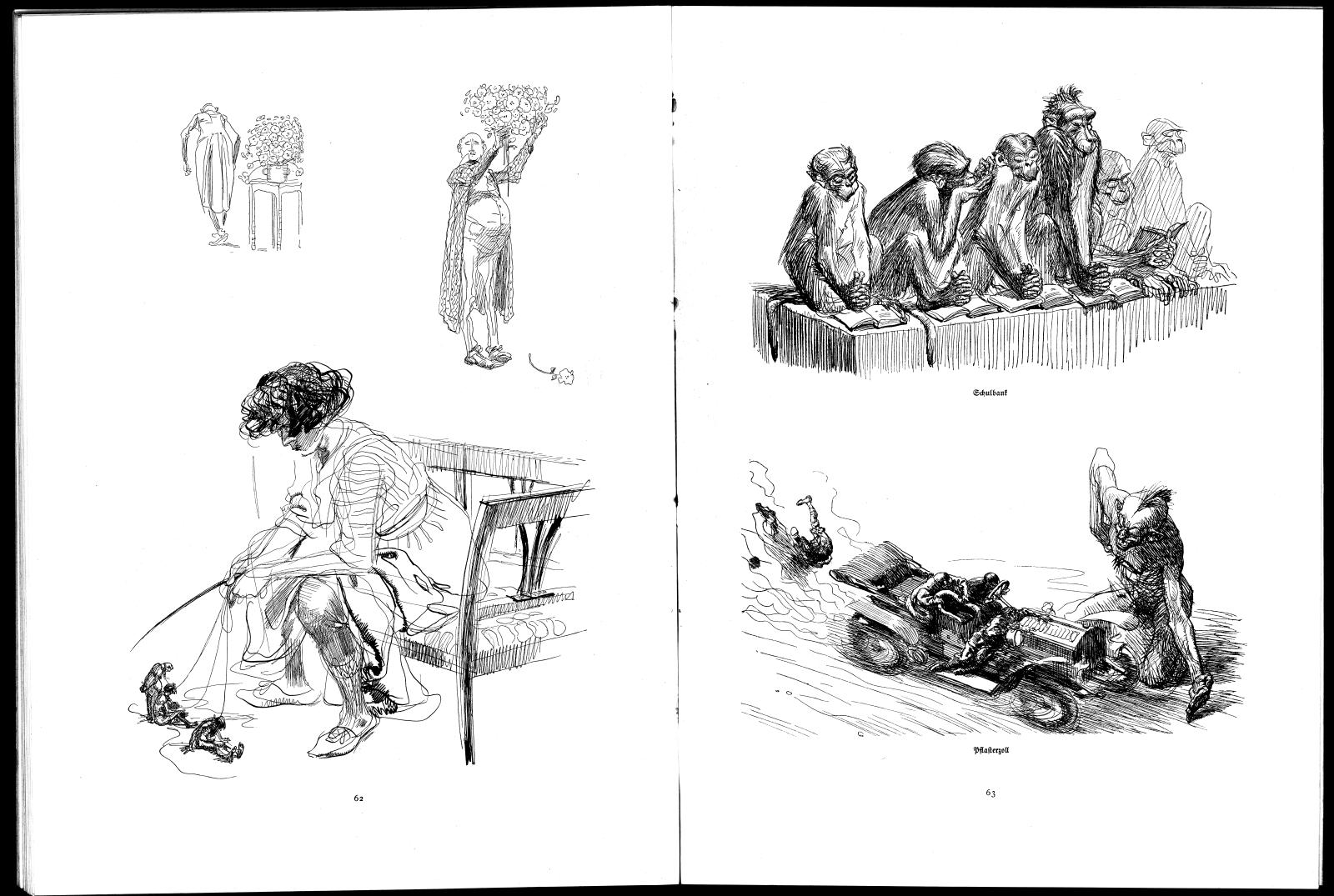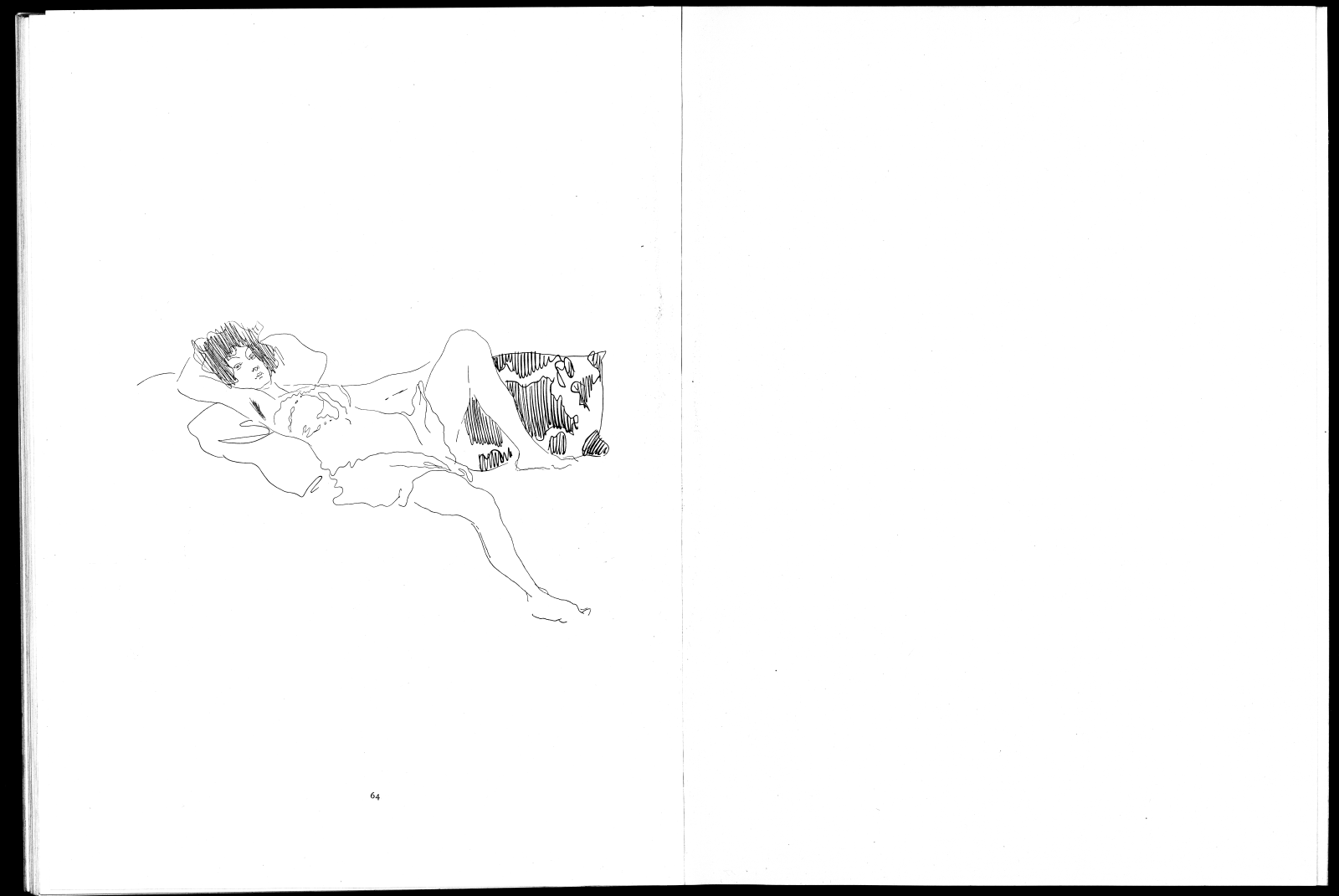#45 - Heinrich Kley - Leut und Viecher, published 1912 - high-resolution scans
Warm-Up Drawing Exercises
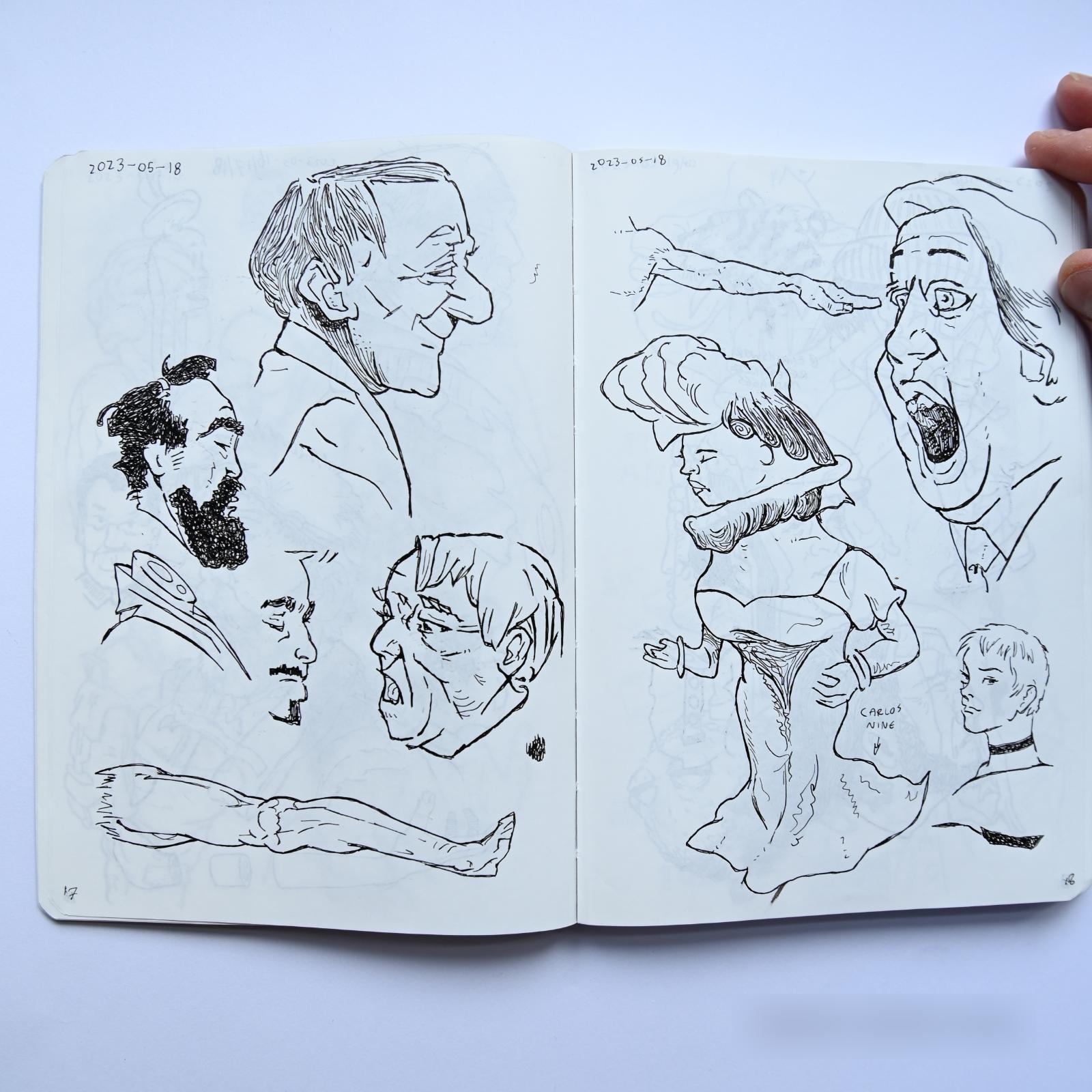
Quickly become better at drawing—without burning out—by using my workbook.
Look at what I was able to get my hands on!
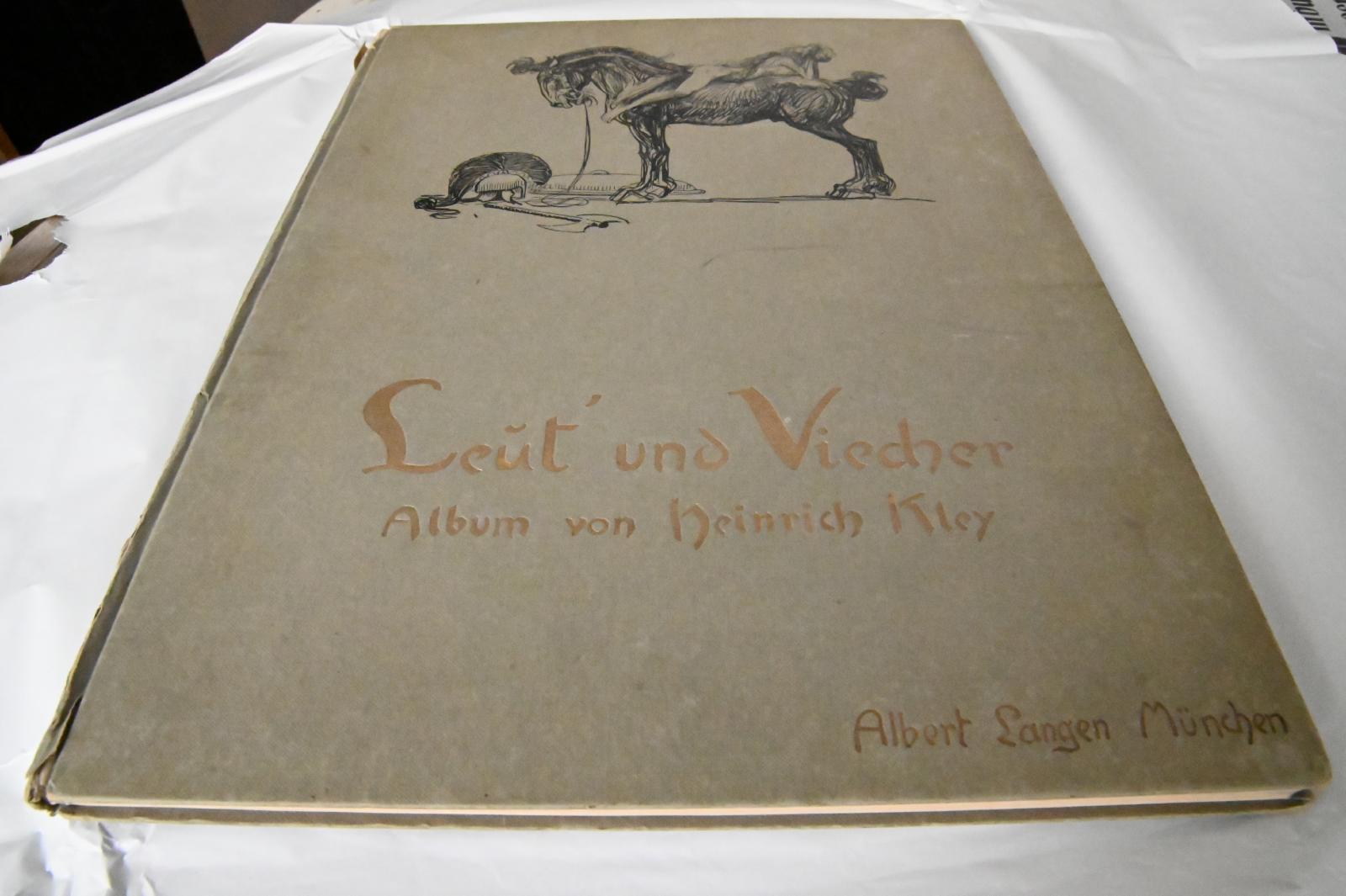
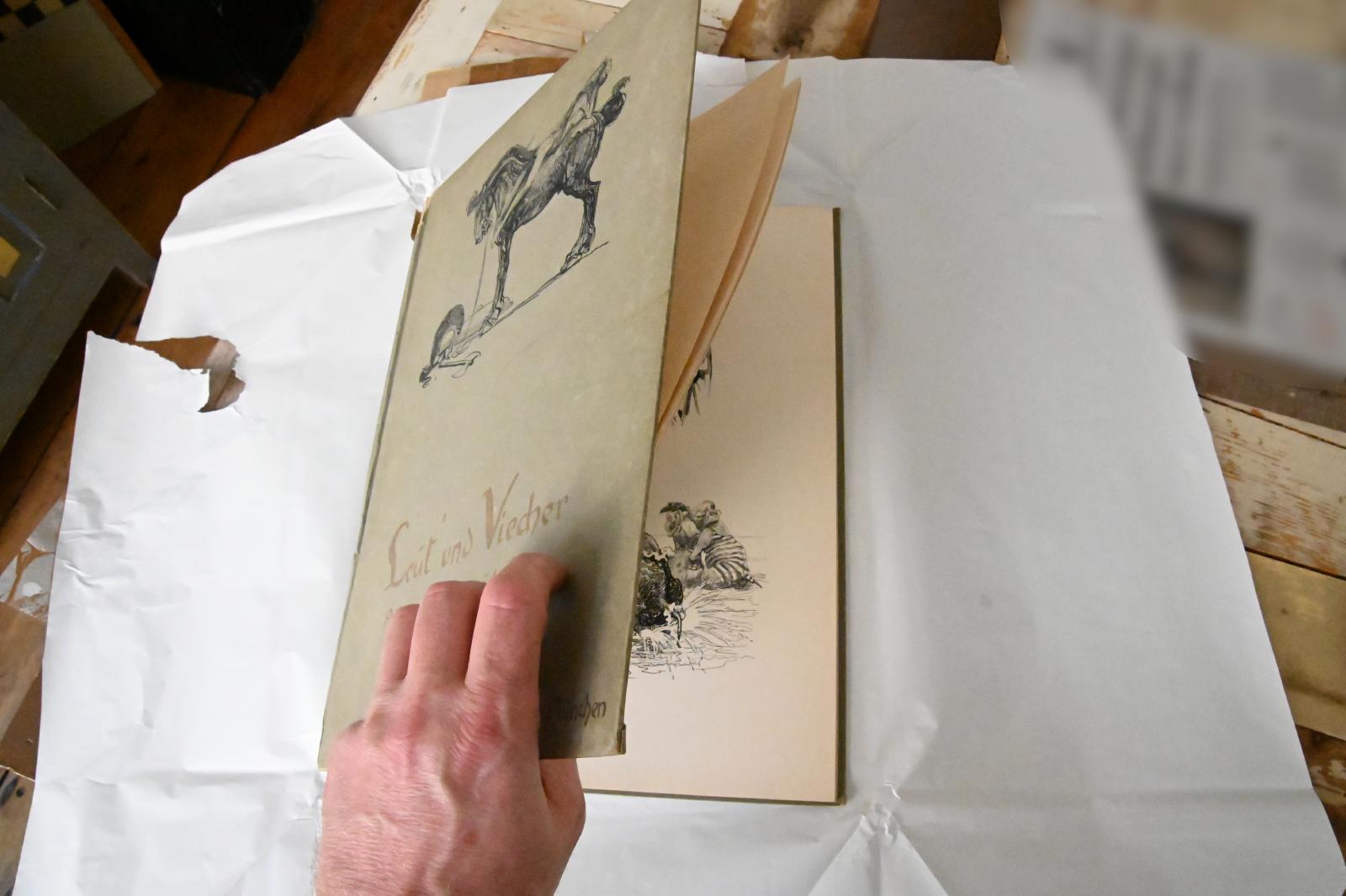
It’s a book with art by Heinrich Kley--published in 1912!
This means that it is in the public domain, and that I can legally share scans from the book.
Below you can see double-page spreads where the image is 1600 pixels wide.
But you can also download a zipfile with all the double-page spreads scanned at much higher resolution:
The lessons I learned are bound to seep into my future letters, but today I wanted to share something else with you: these scans.The pages are huge, around 12 by 16 inches, and the art is just stunning, and hard to come by.
The images in the zip file (see button above) are scanned at 600 pixels per inch — the images are around 140 megapixels.
I hope you enjoy!
Ayal
I hope Marshall Vandruff makes the recordings of his course available somehow. They are really worth your time and money. What I am taking from it is that I have to become more fearless, to just draw without needing every drawing to be good. Heinrich Kley seems to have been drawing these from his imagination! Or rather, perhaps, from memory.
His knowledge of anatomy is, of course, knowledge, thus from memory. But still! He drew them straight in pen! Novel idea, to just start drawing and to see what story comes out of it. Because each of these illustrations tells a story.
I took a fresh new sketchbook, and I made it a routine to do several different types of drawing exercises in it, all focusing around the Heinrich Kley Art:
- Dexterity: the various exercises I have for practicing becoming better at placing ink lines with intent. (I need to update my article on that exercise!)
- Memory: Look at a Heinrich Kley illustration, put it away, and draw it from memory. If I had forgotten things, I tried to imagine it and tried to make it a good-looking thing anyway.
- Observation: Copy the Heinrich Kley illustrations from observation — typically after I had done a it drawing from memory, to see where I was off.
- Analysis: This was three-dimensional form studies and anatomy studies of poses.
- Reveries: The real meat: trying to draw in an improvisational way, seeing what was on the page and then adding lines to it to turn it into a drawing.
This deviated slightly from Marshall’s instructions (sorry, Marshall!) but I found this worked for me, also because it provided sufficient variety to not become bored. I could switch from one exercise to another.
Anyway, maybe give it a shot too! Here are some of his amazing direct-to-pen-and-ink drawings.
I secretly suspect that he drew these illustrations many, many times before he arrived at versions he was happy to show to the world. He must have, right? No one can draw that well, right?
Stay well!
Ayal Pinkus
